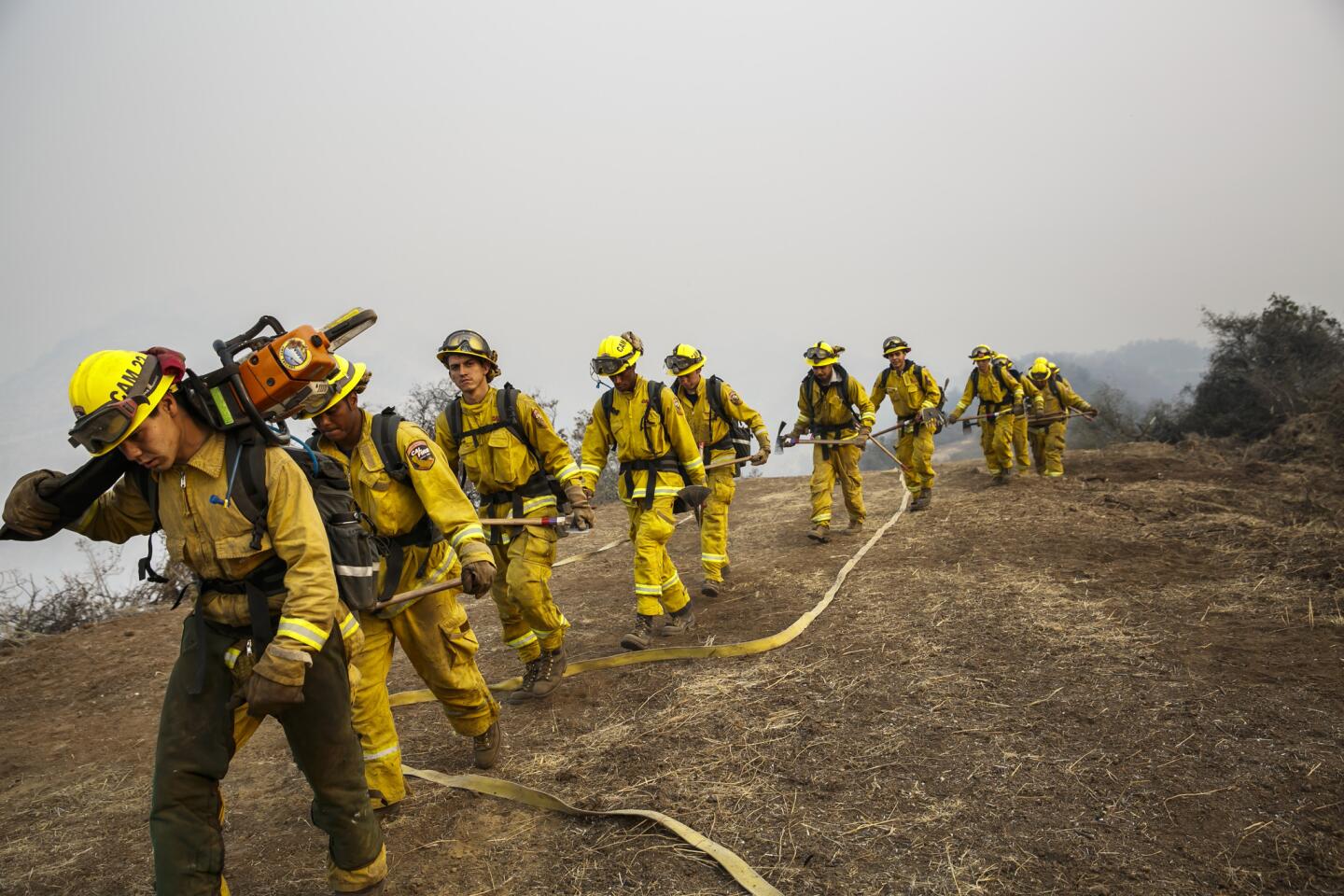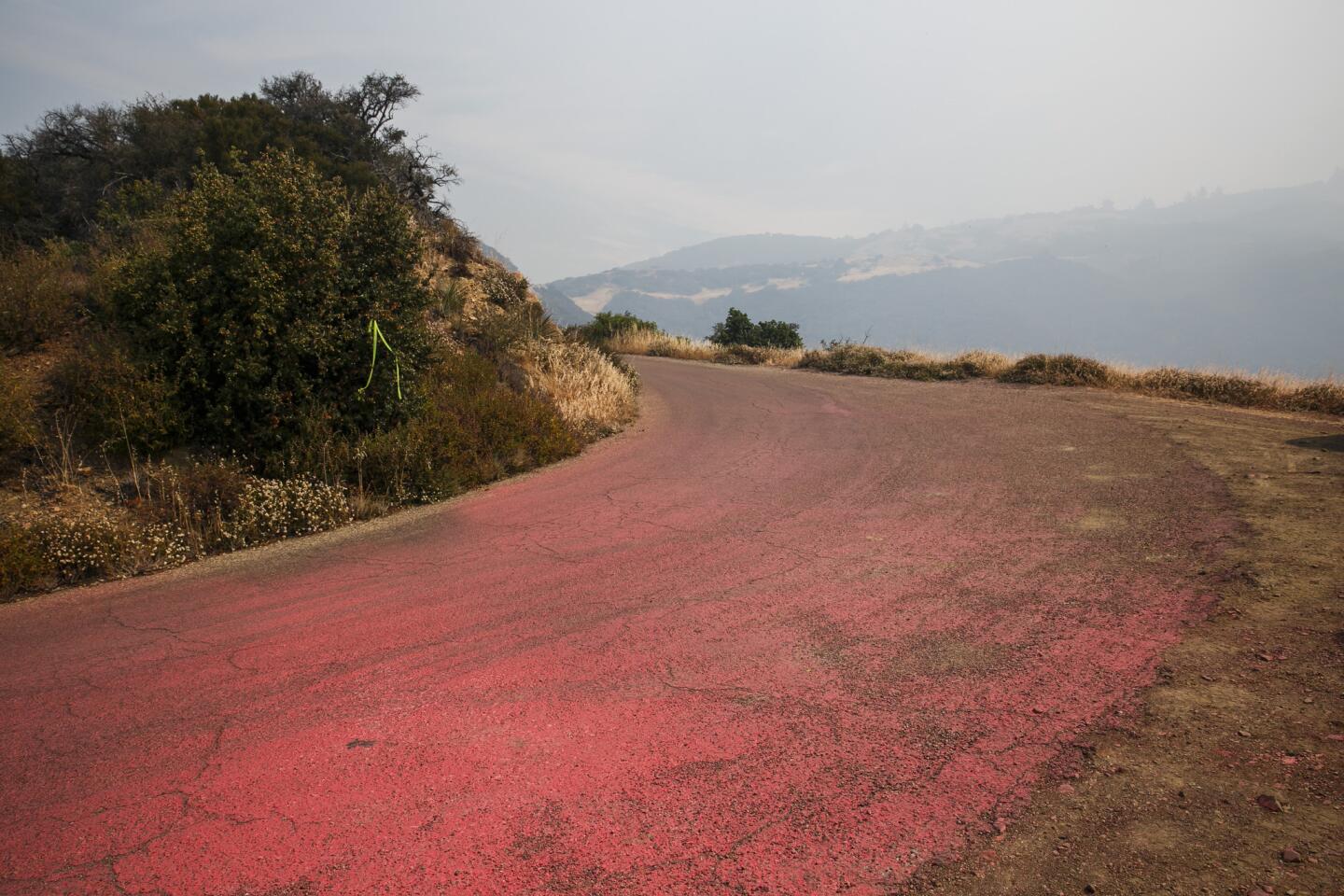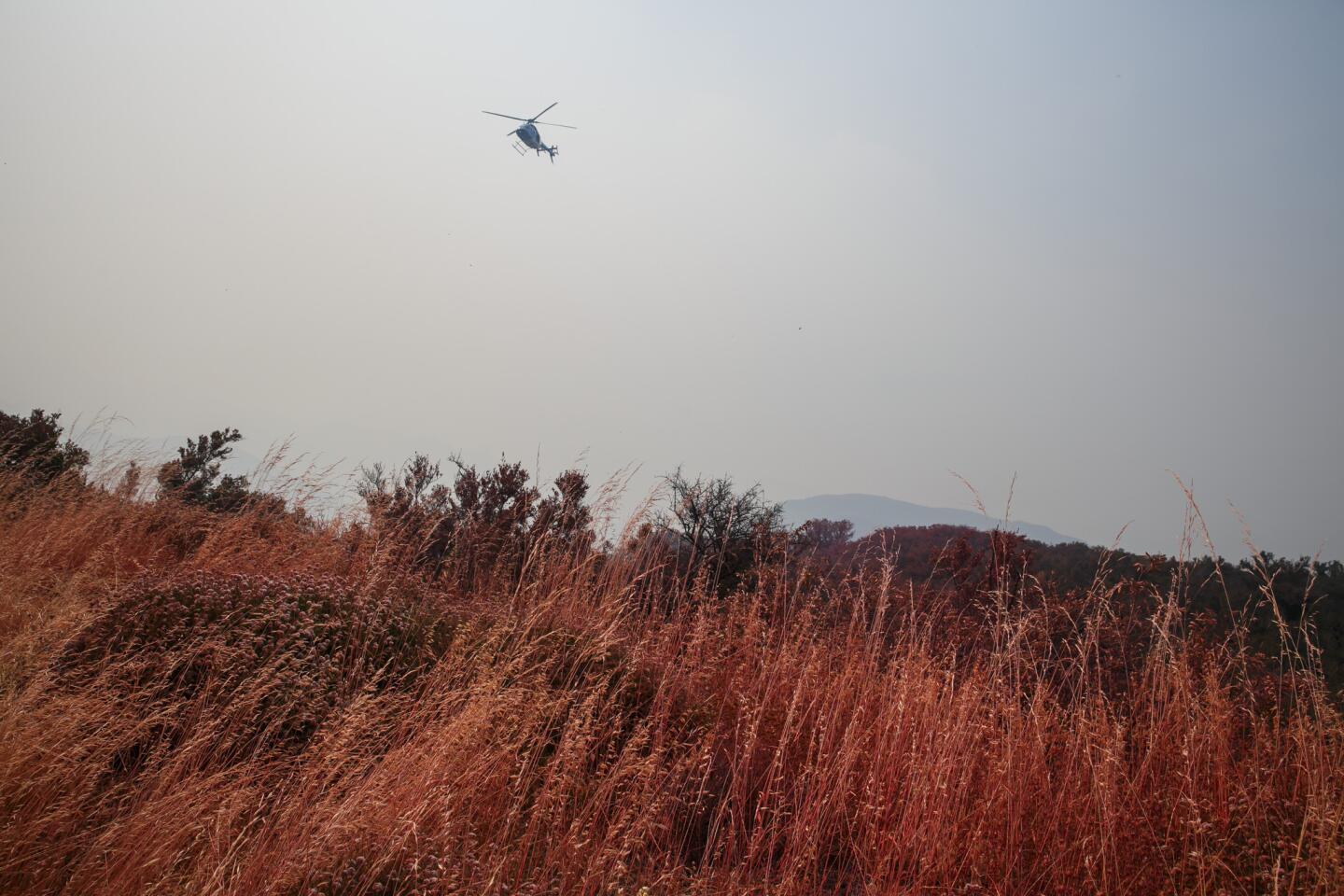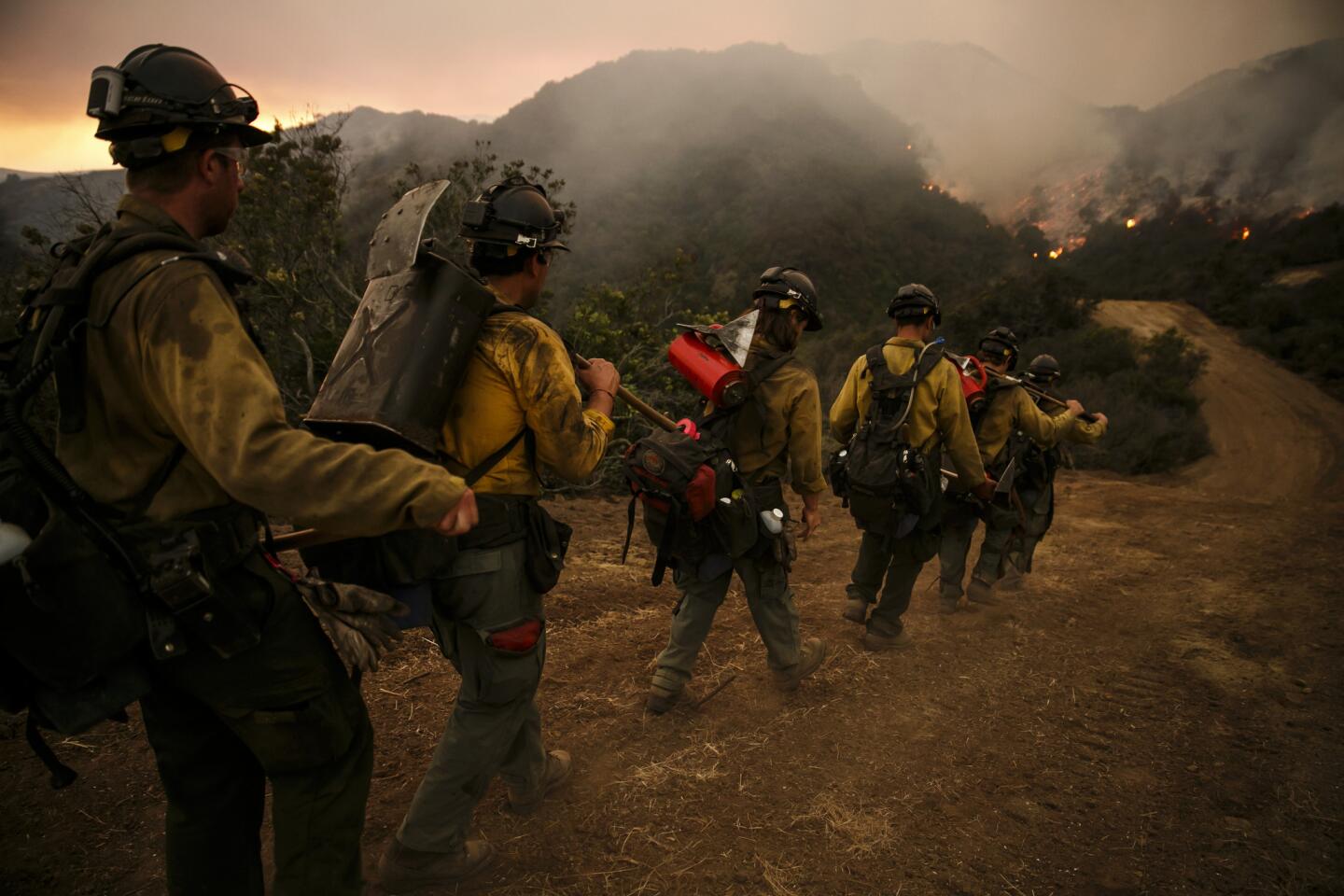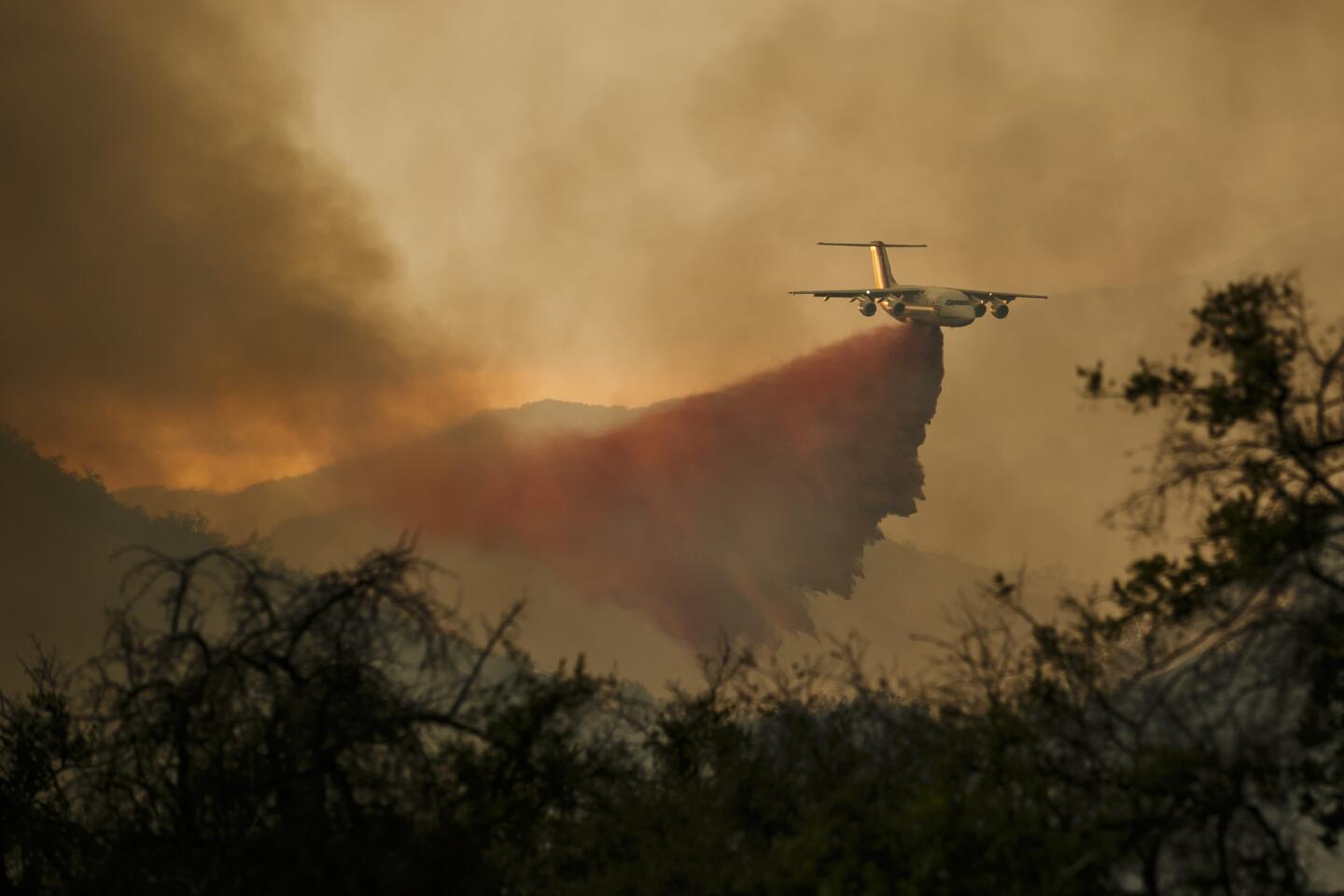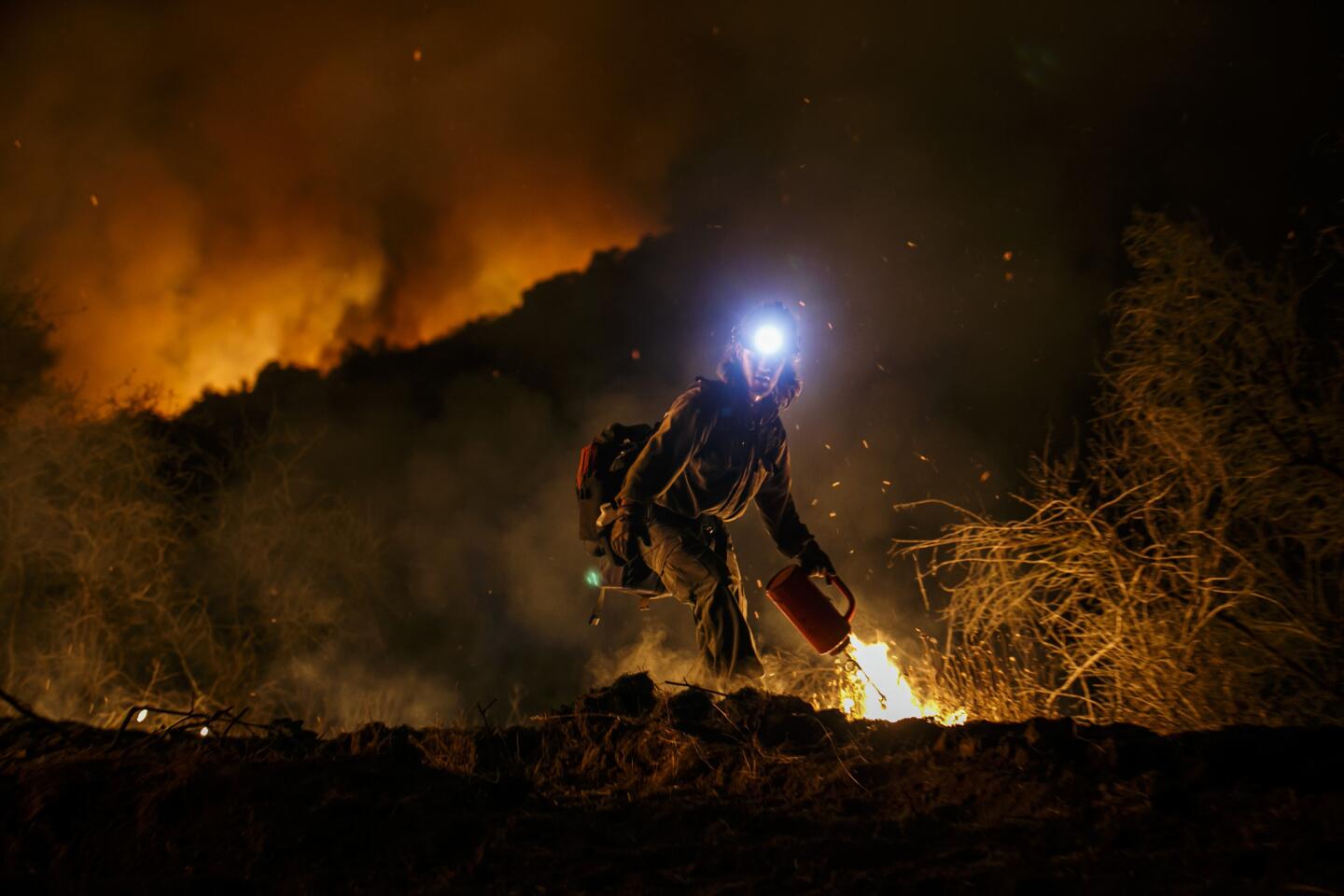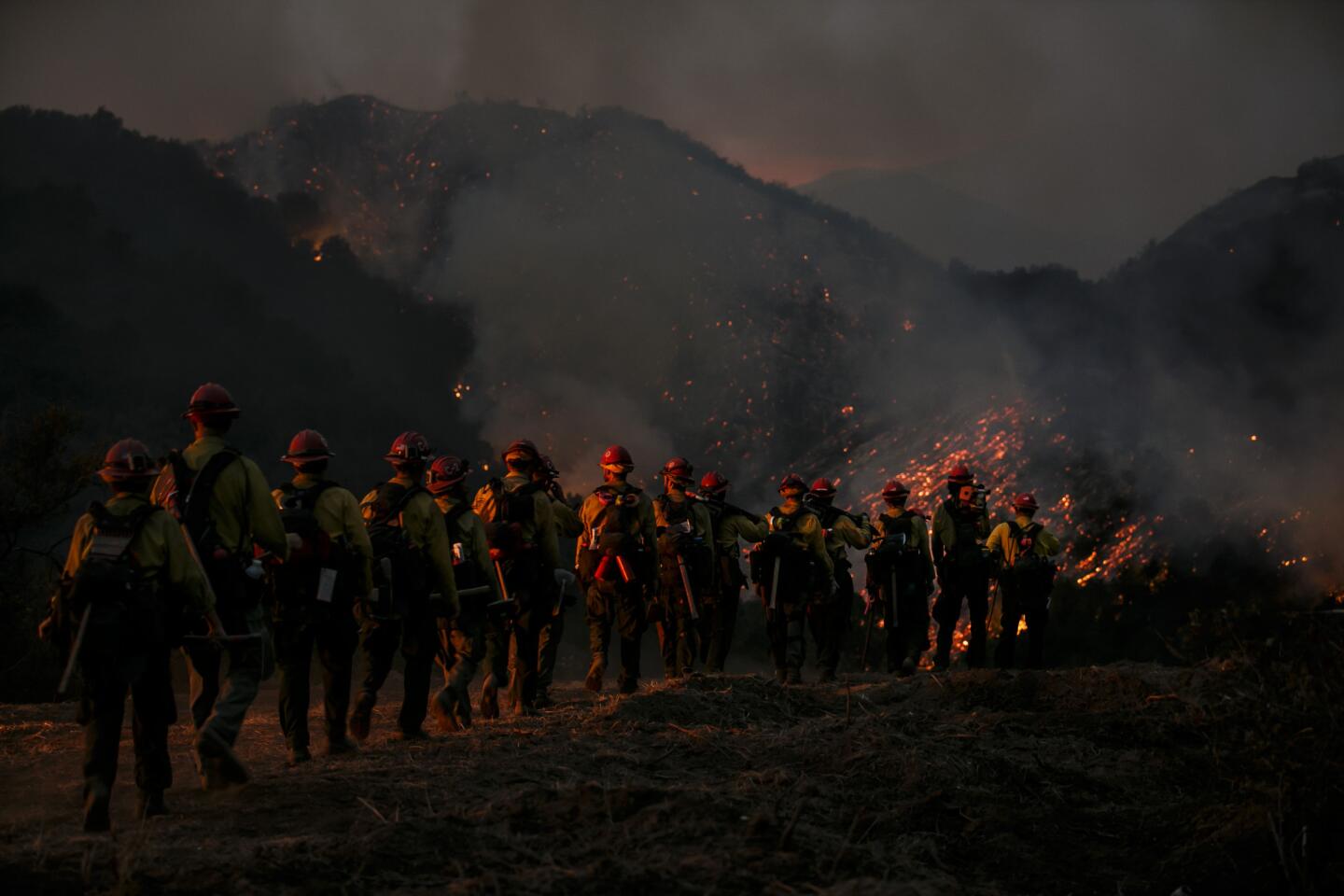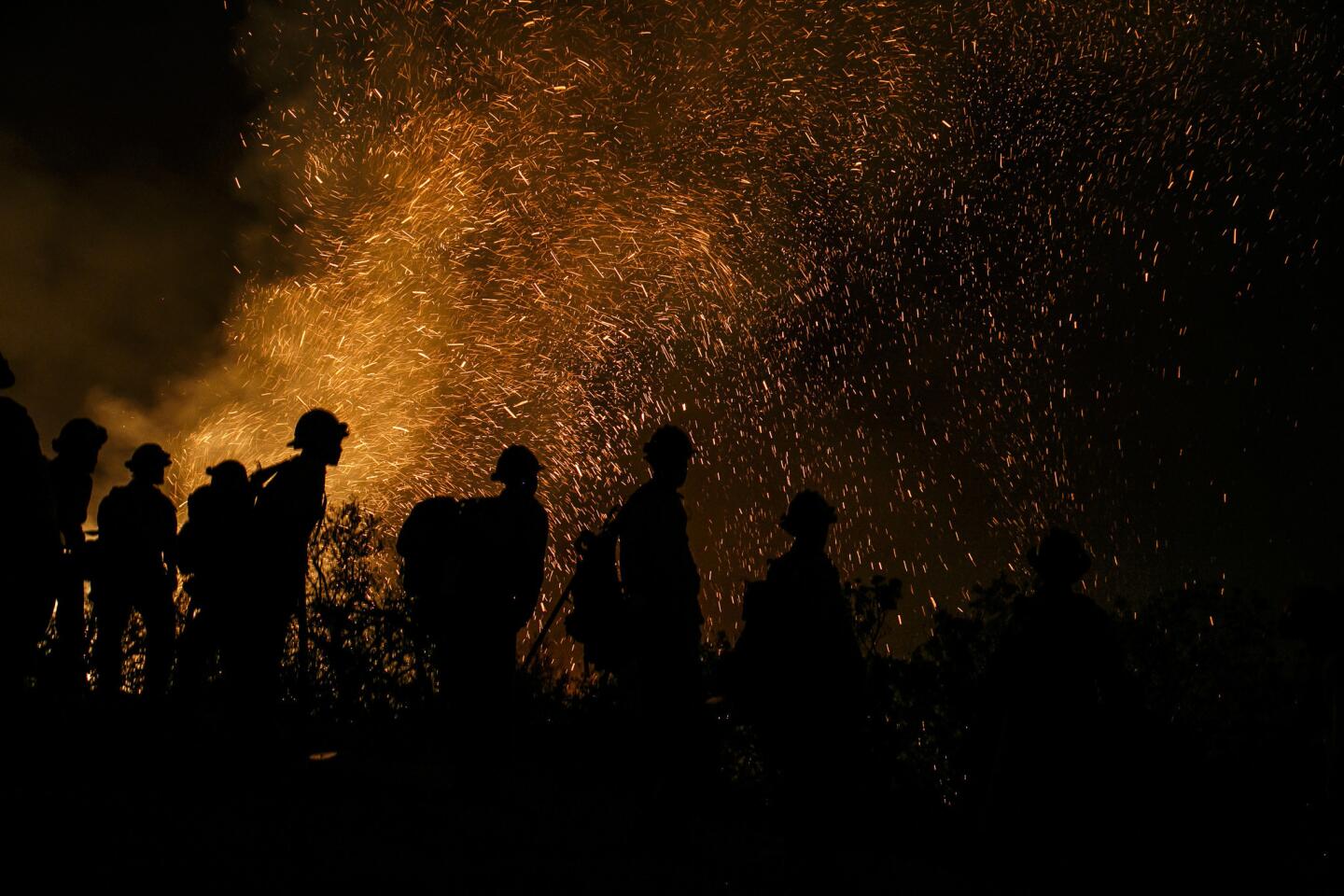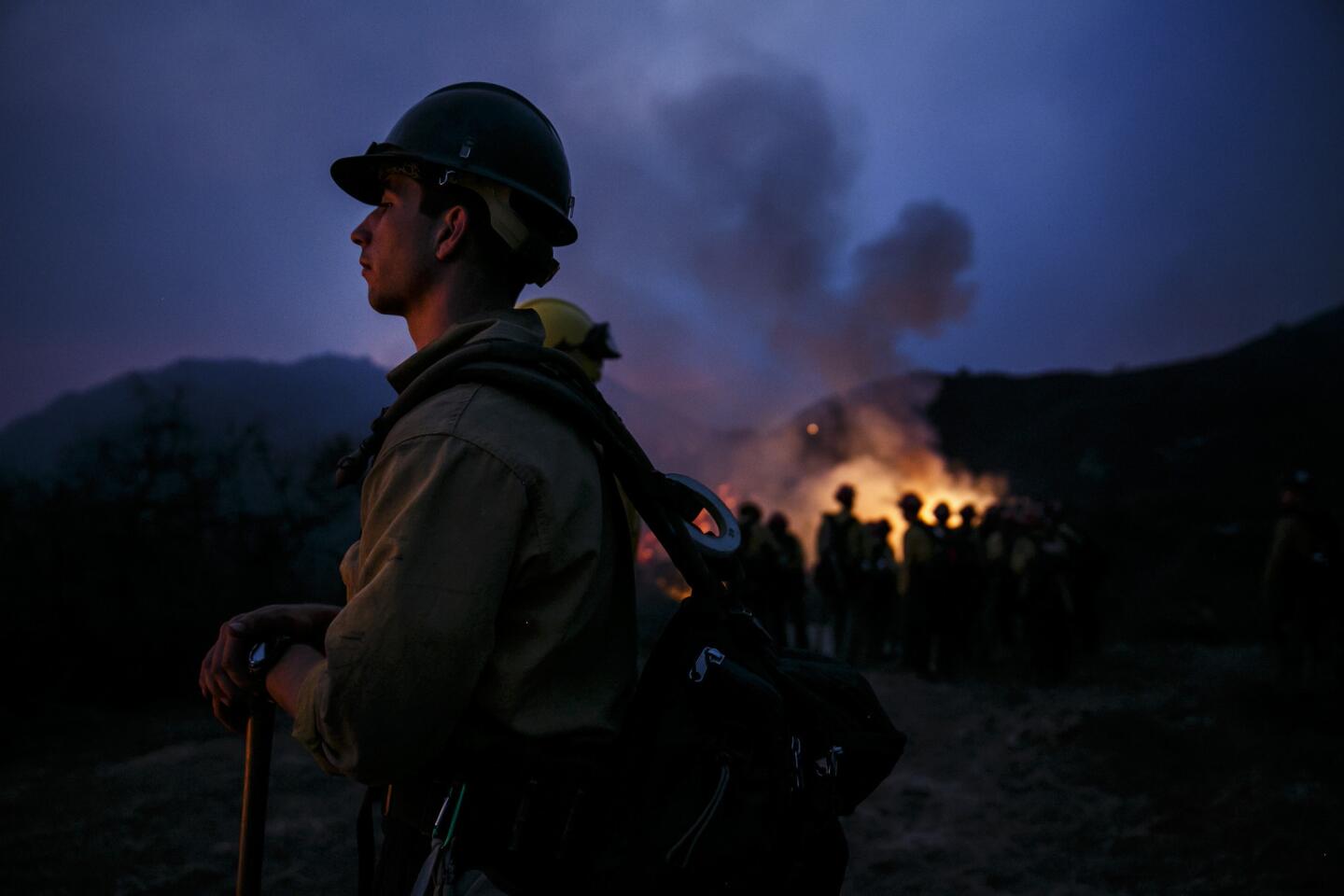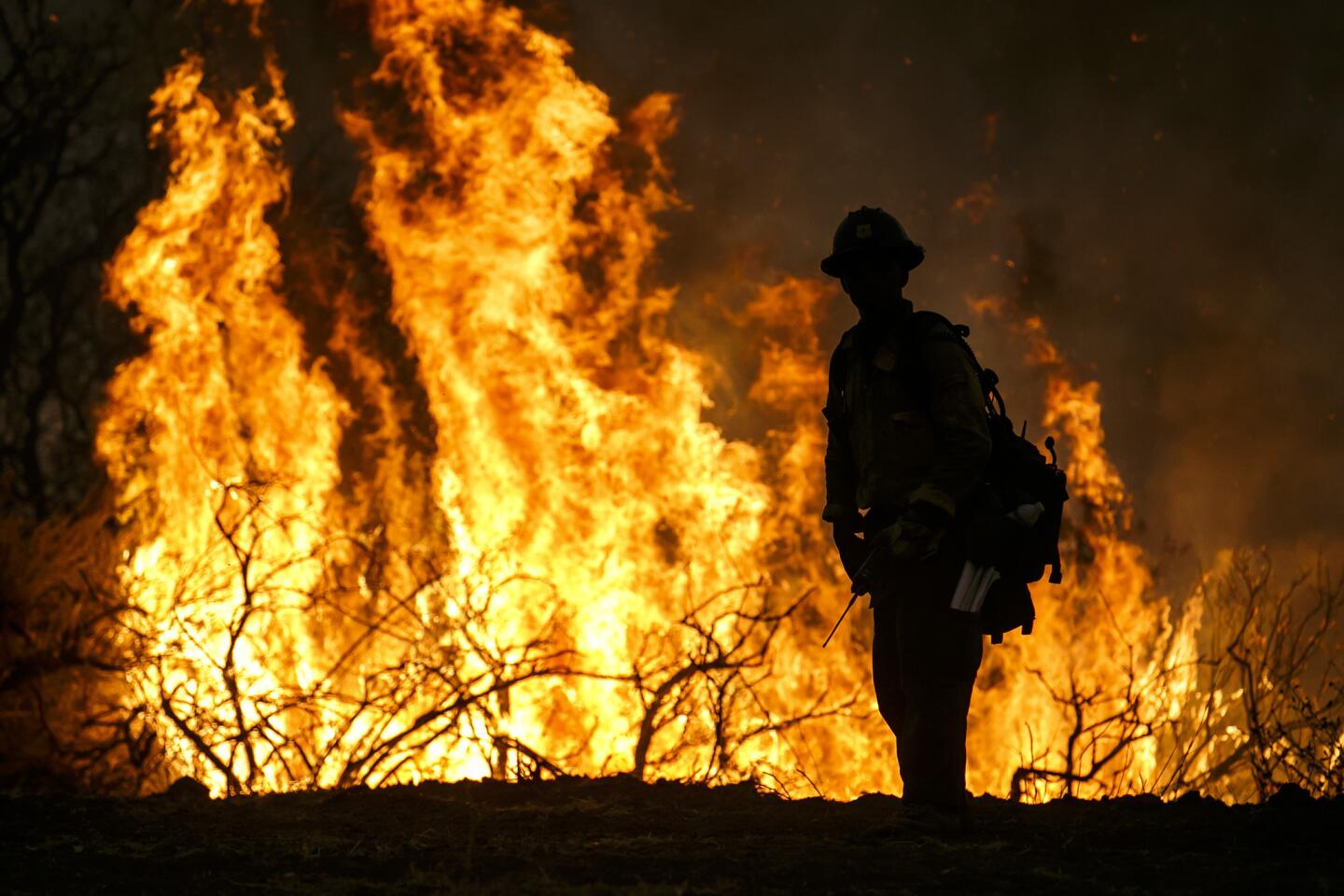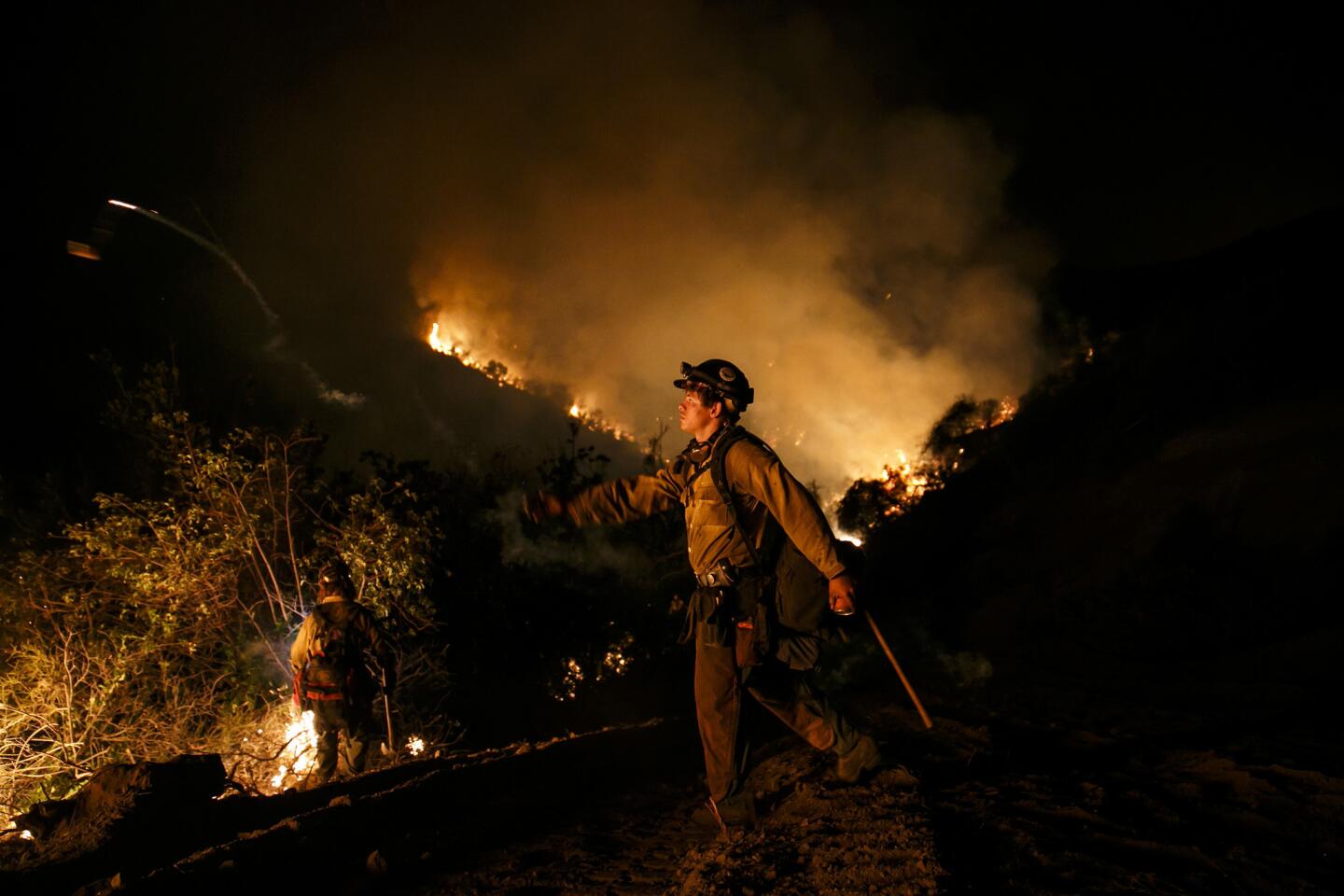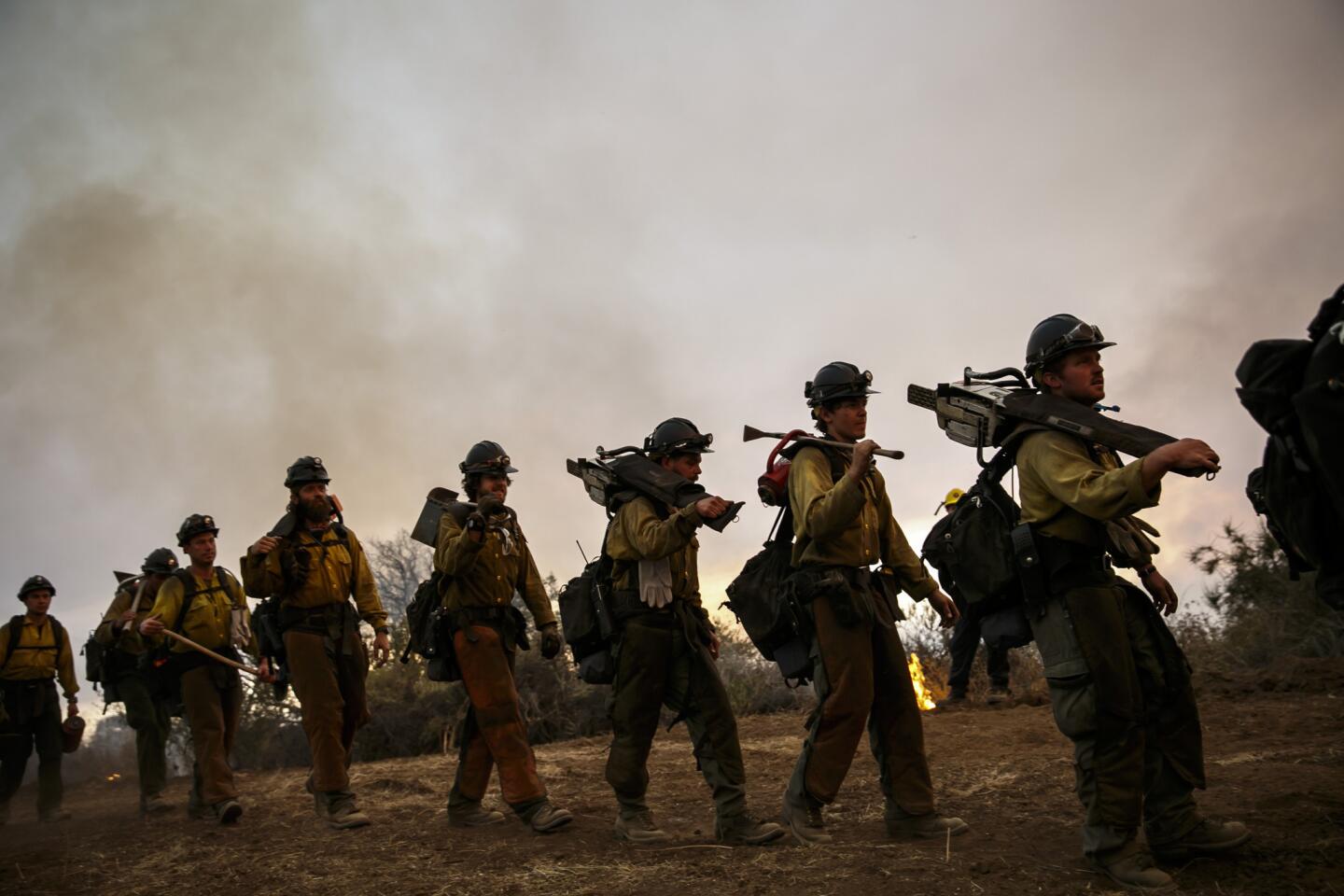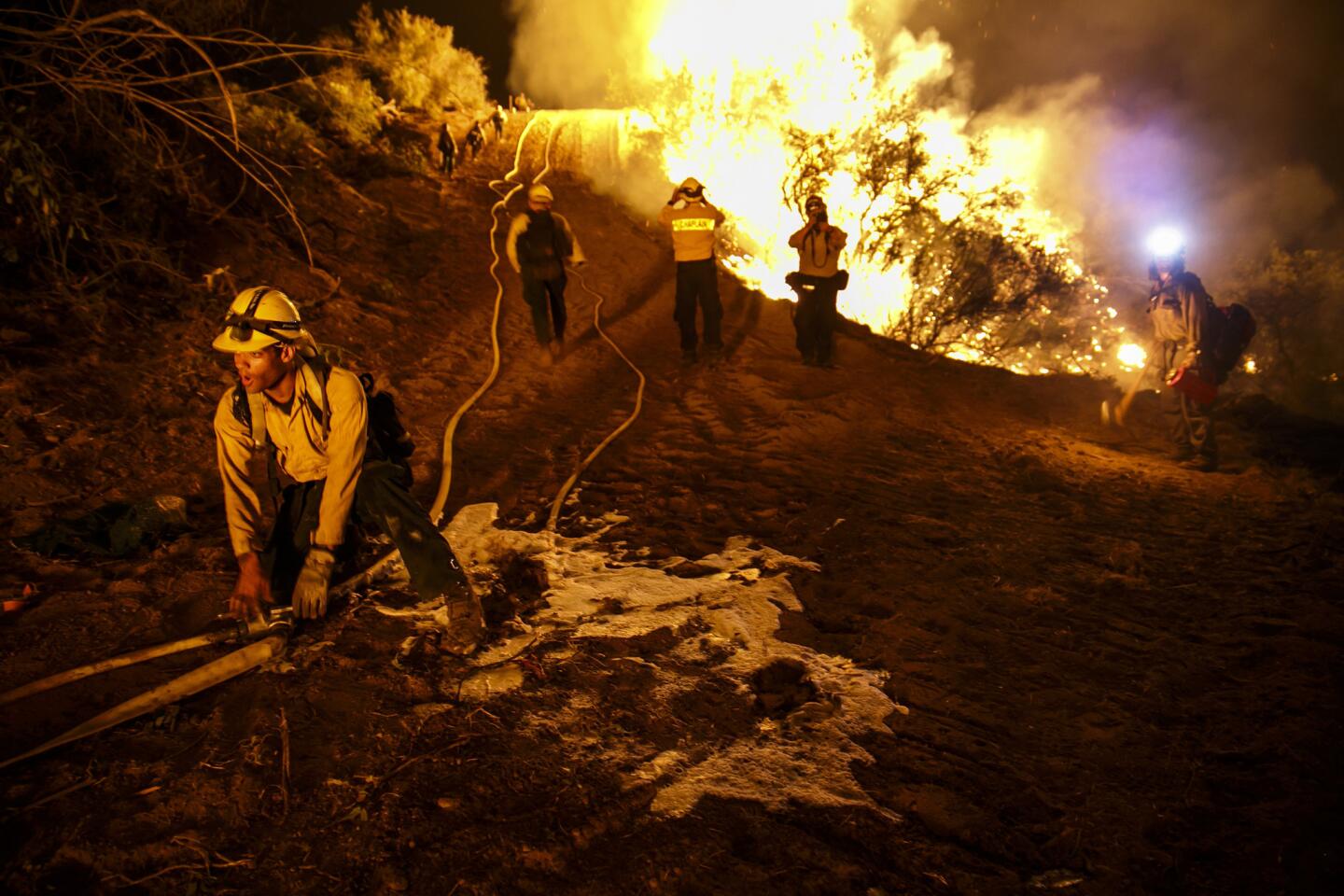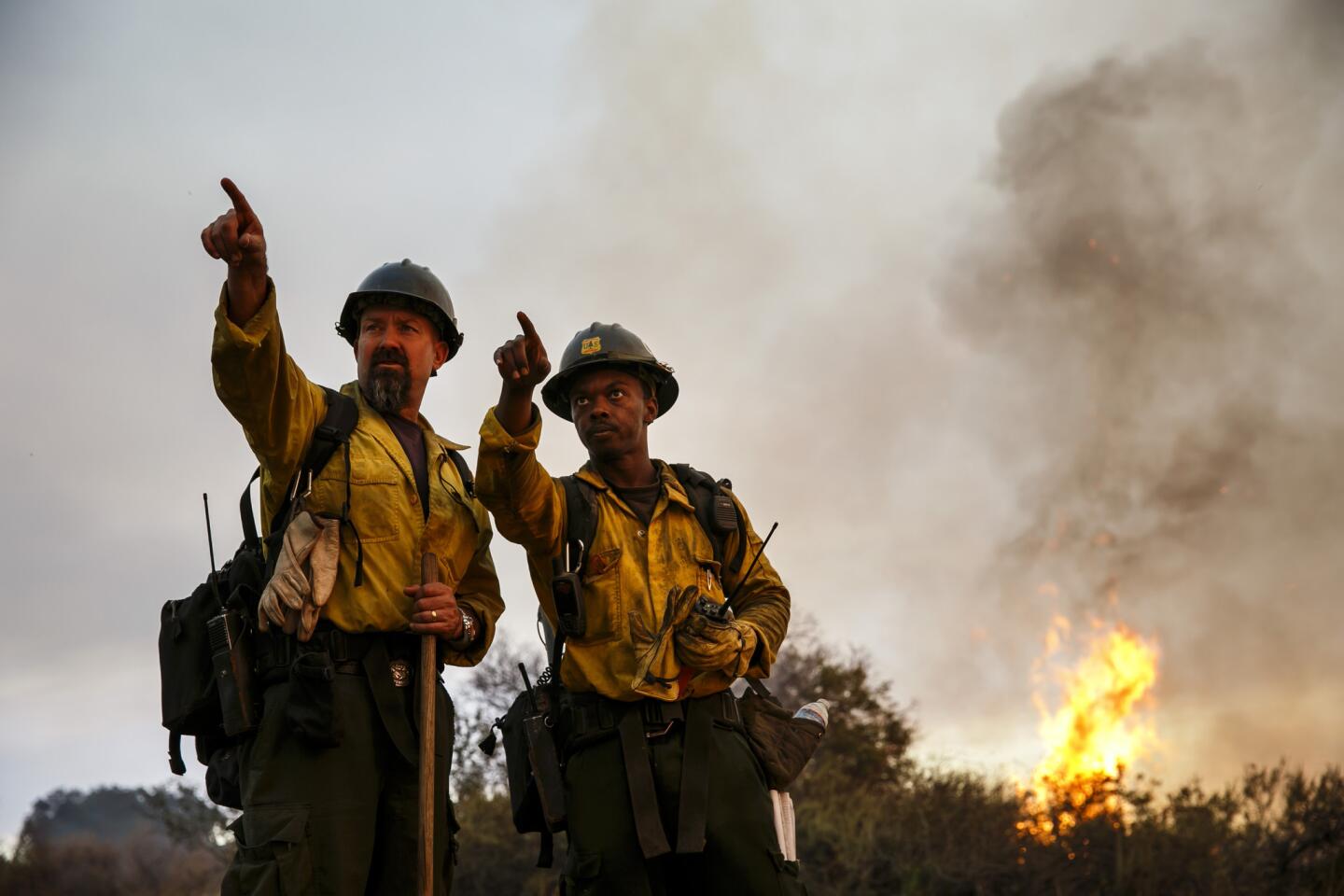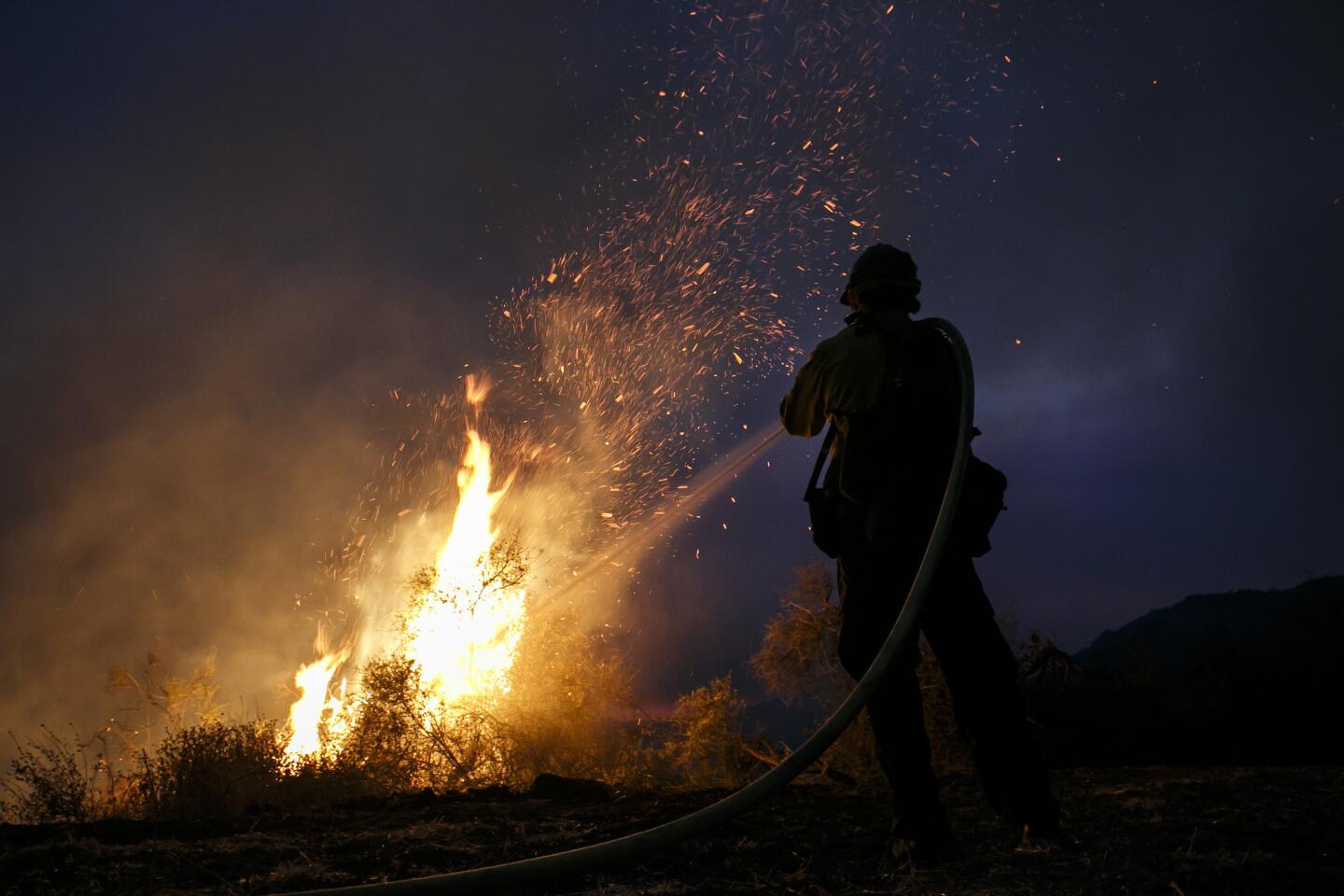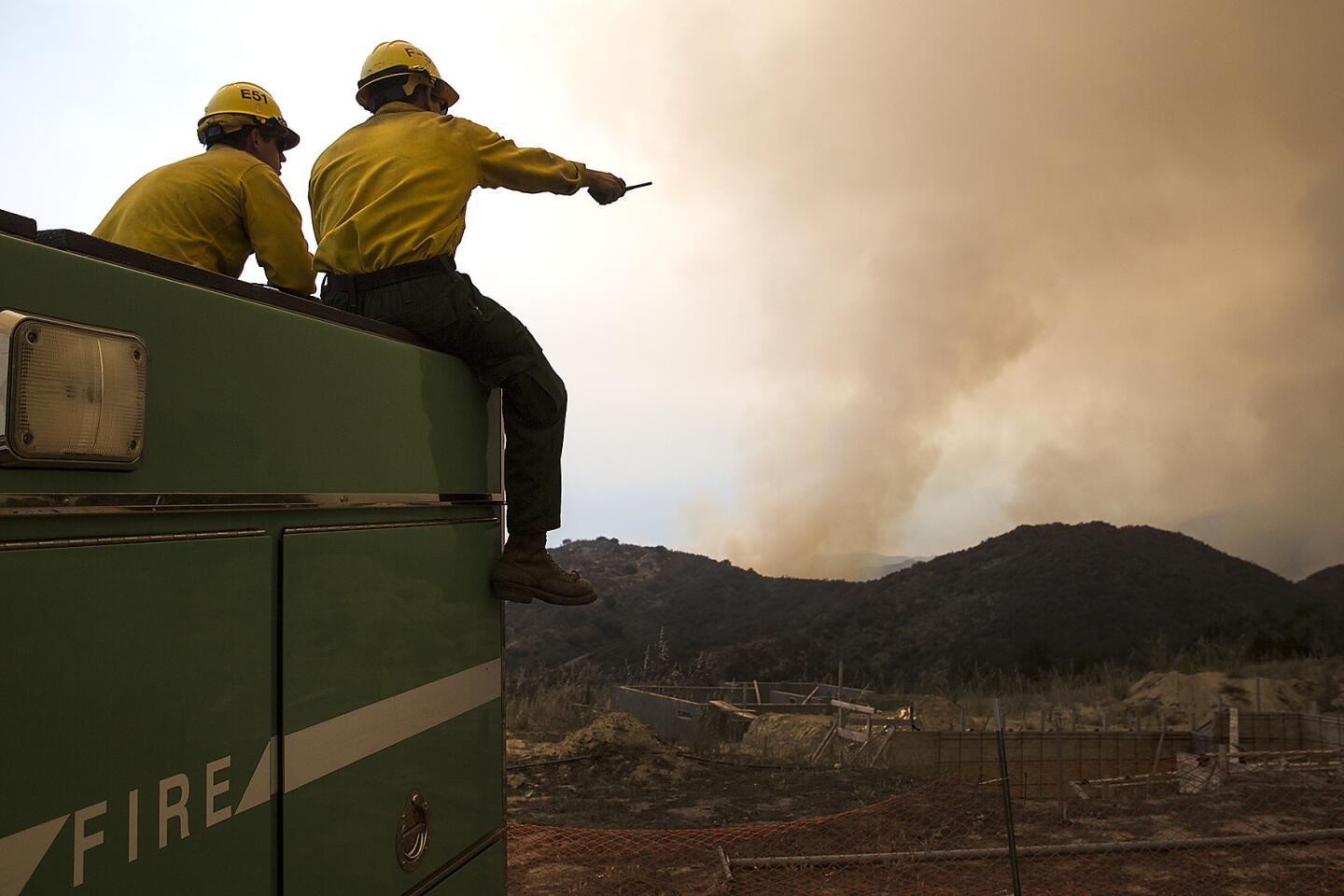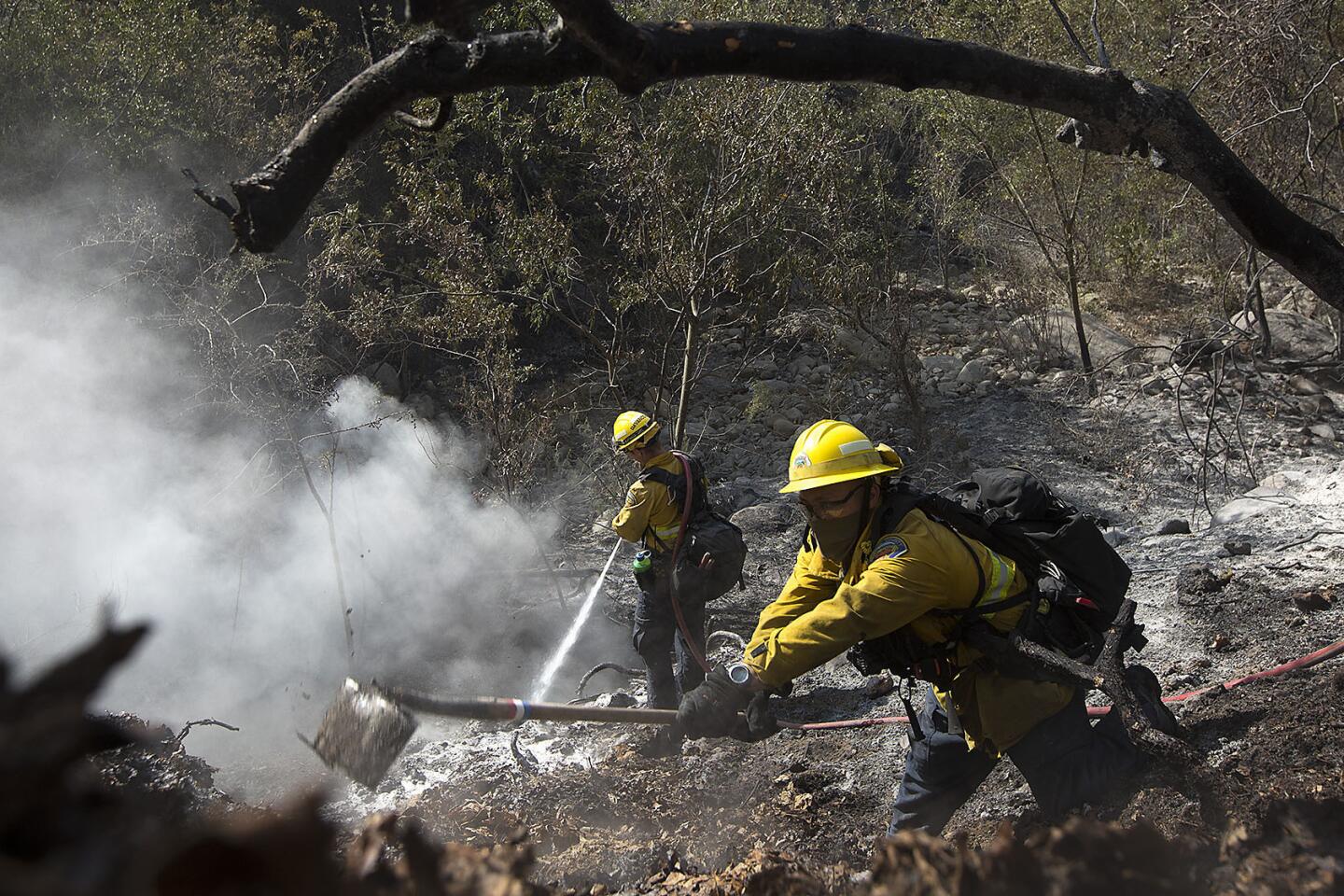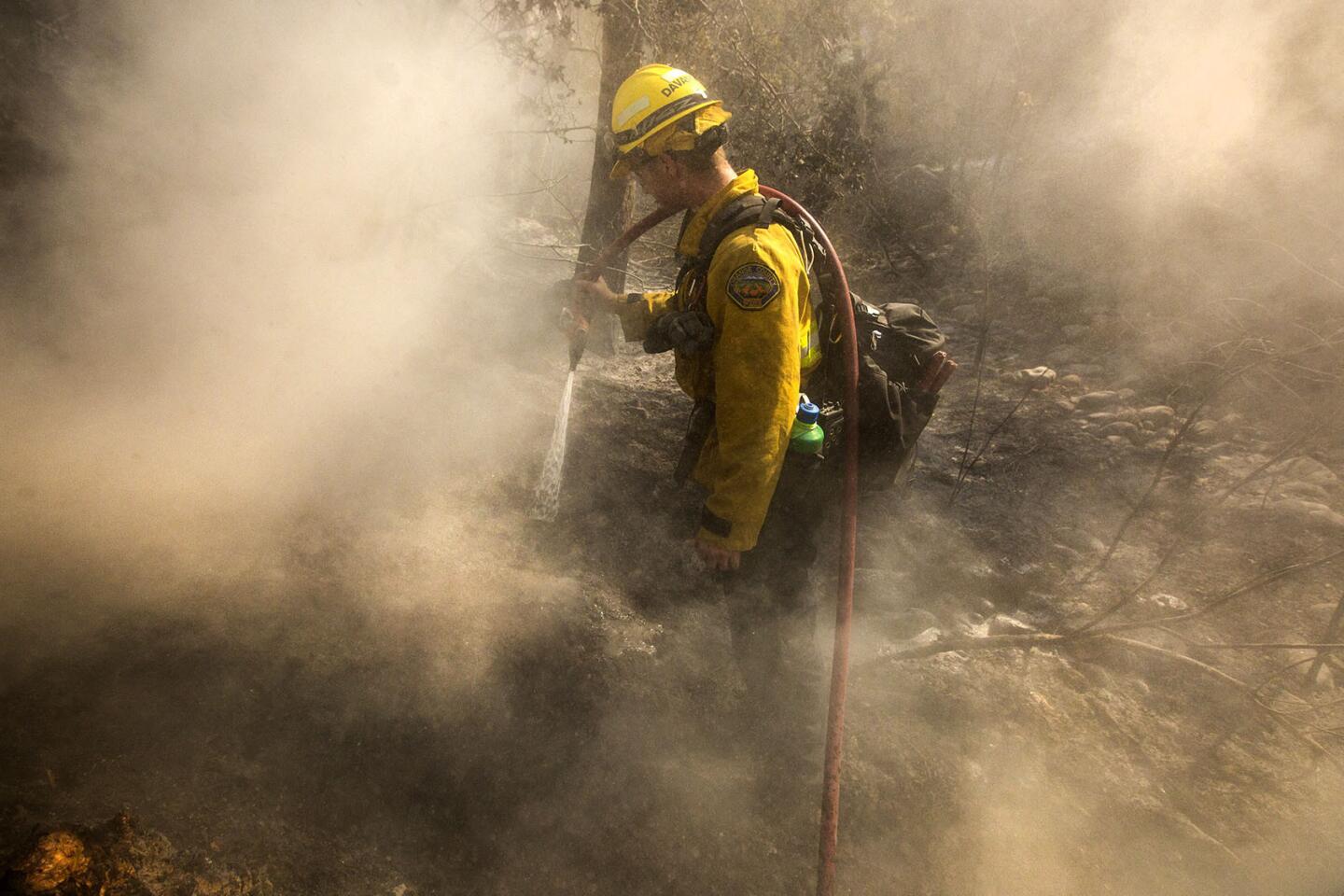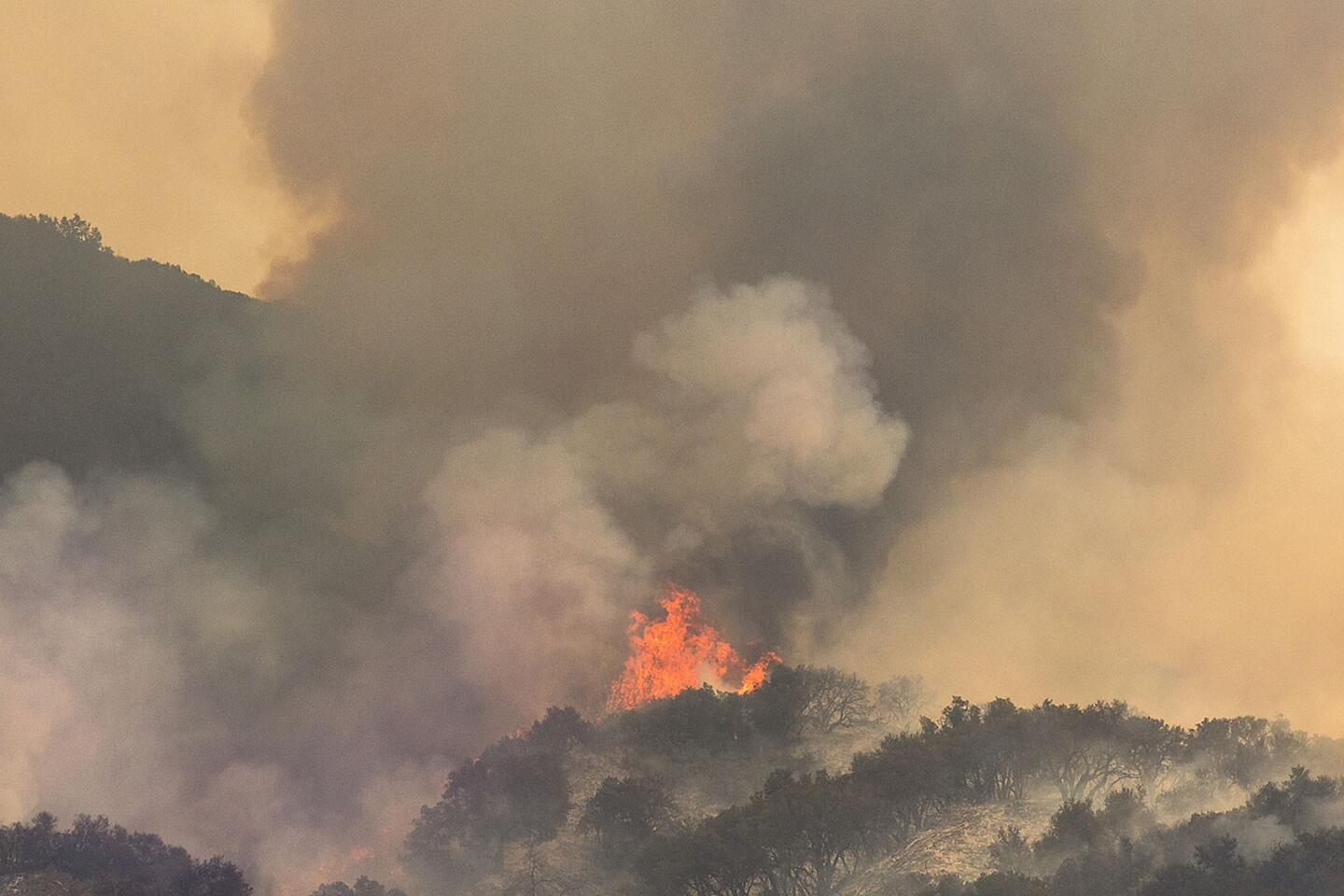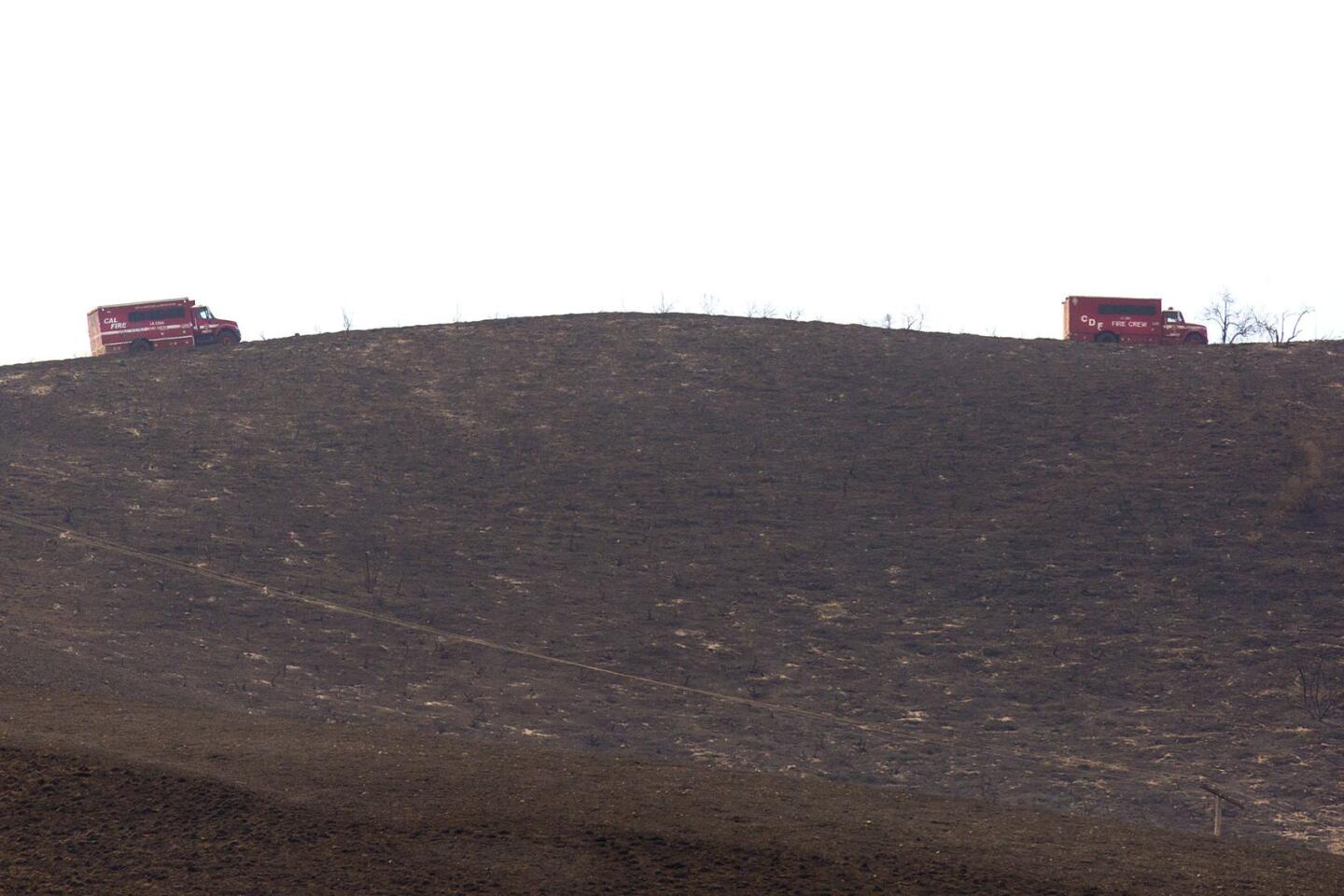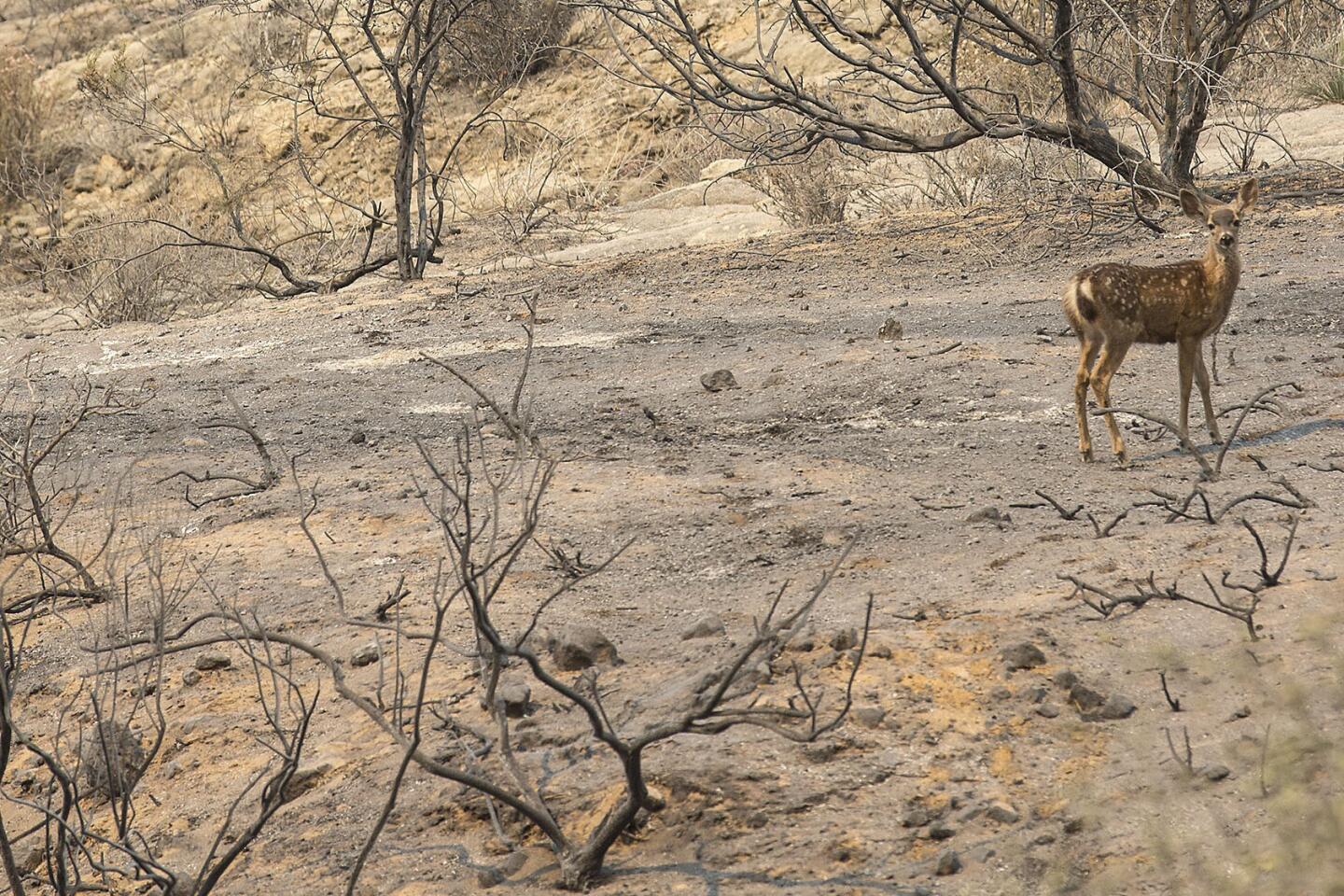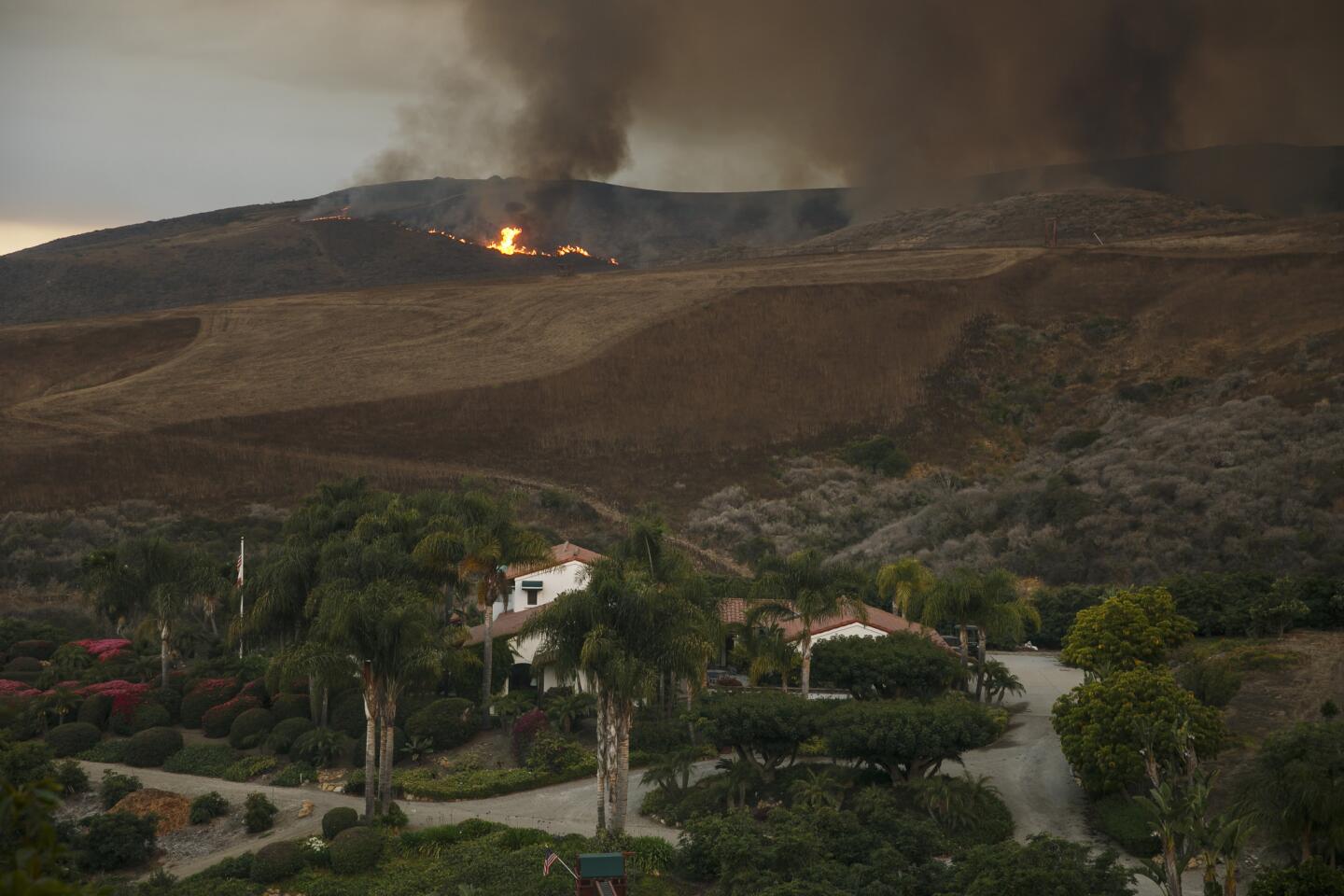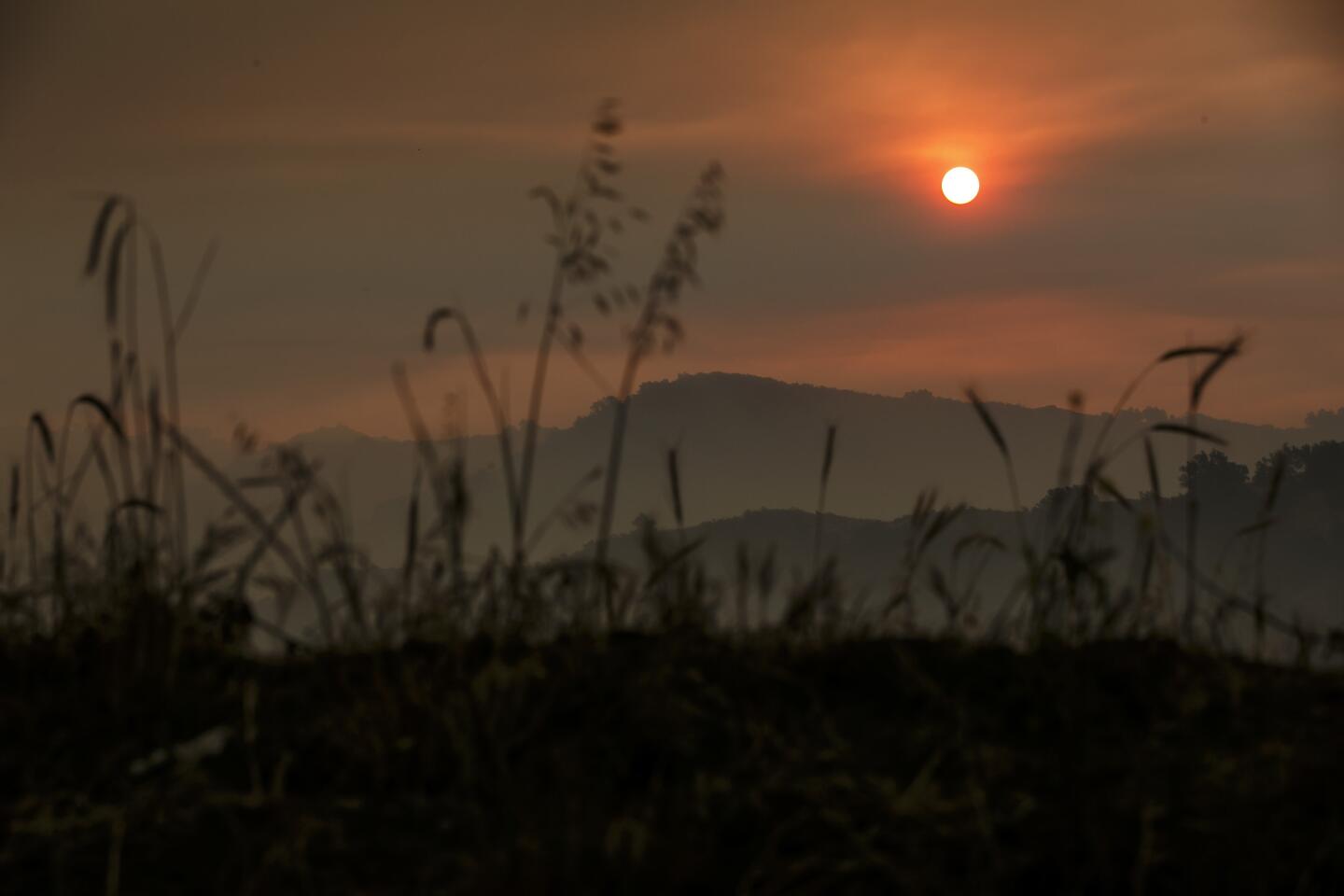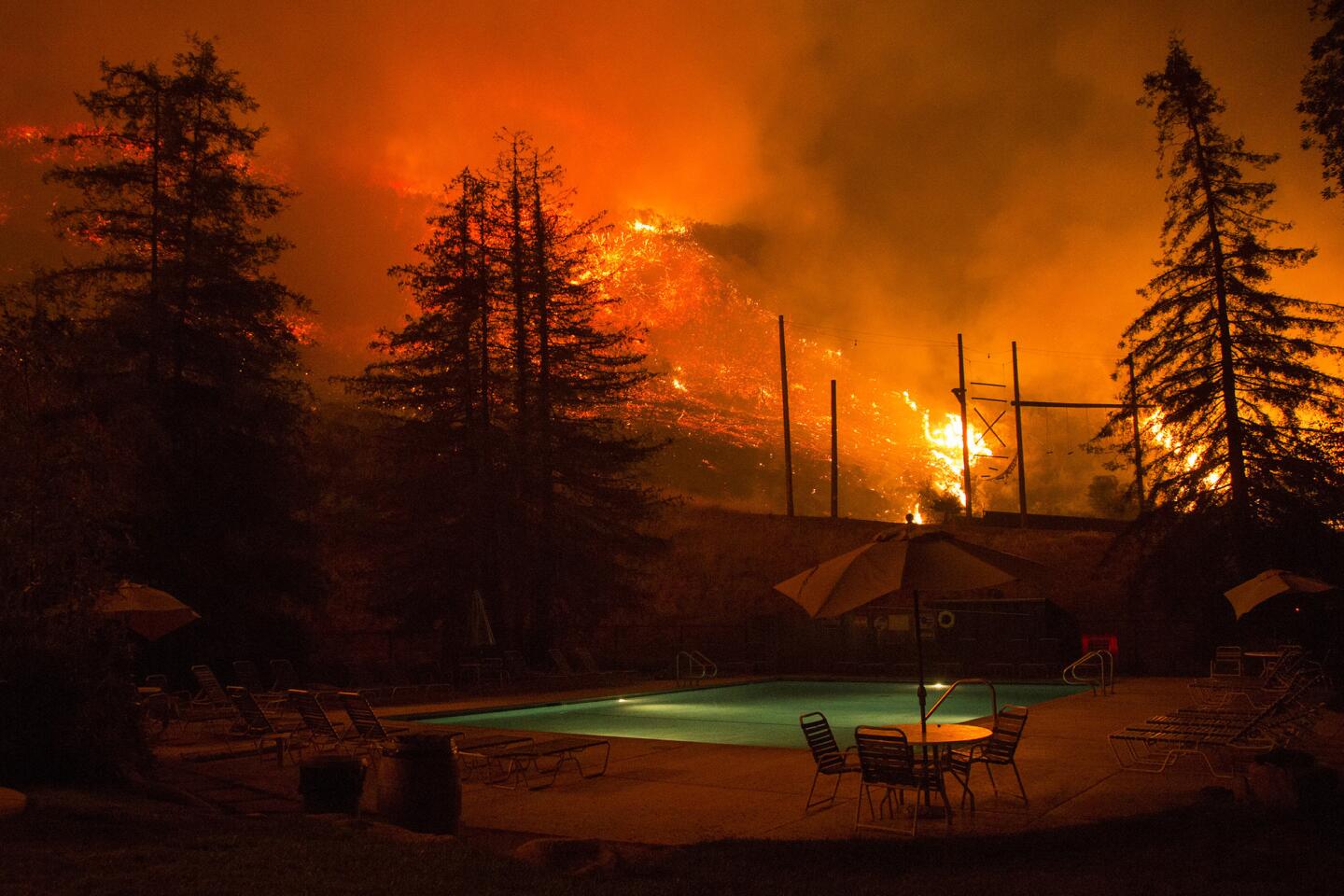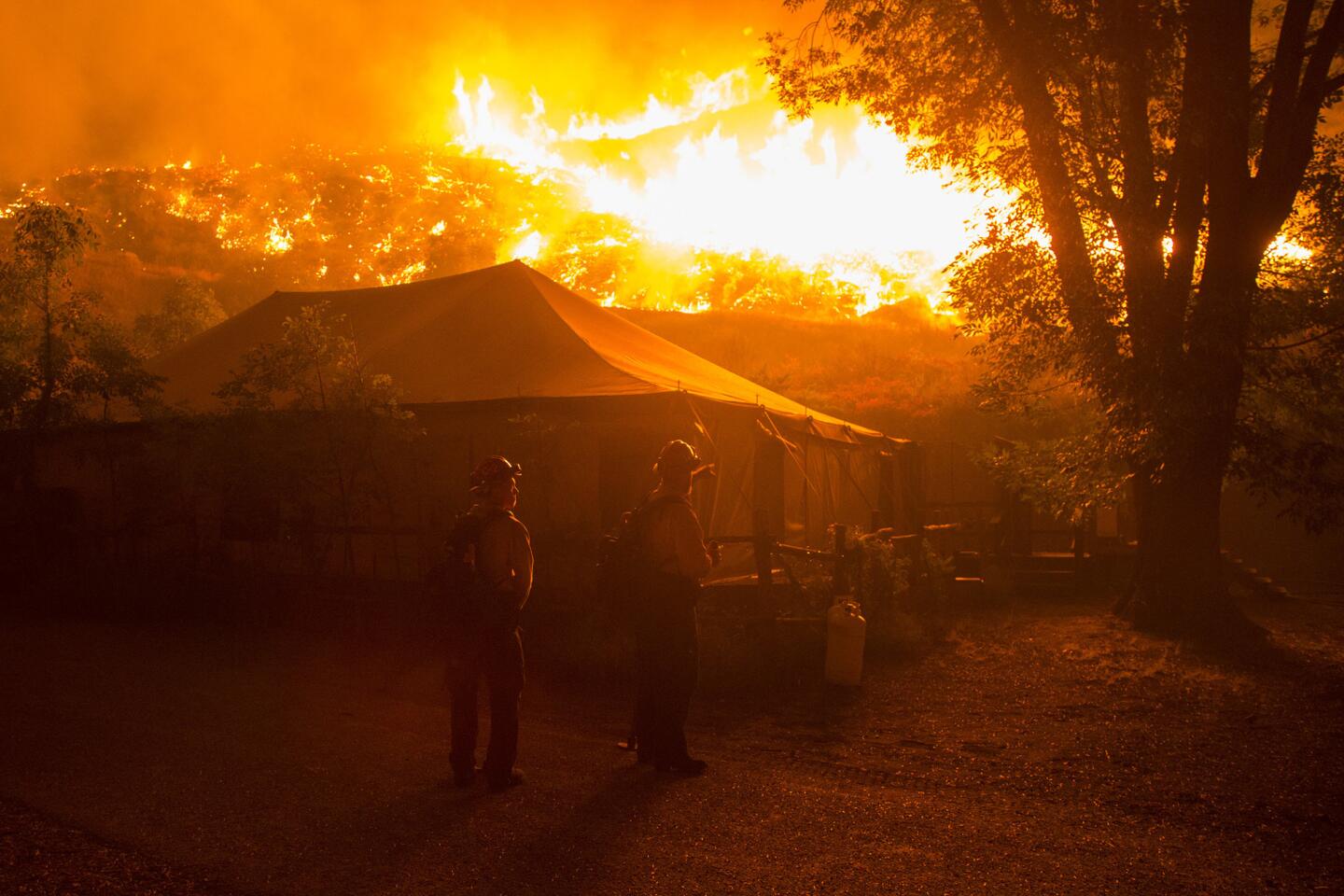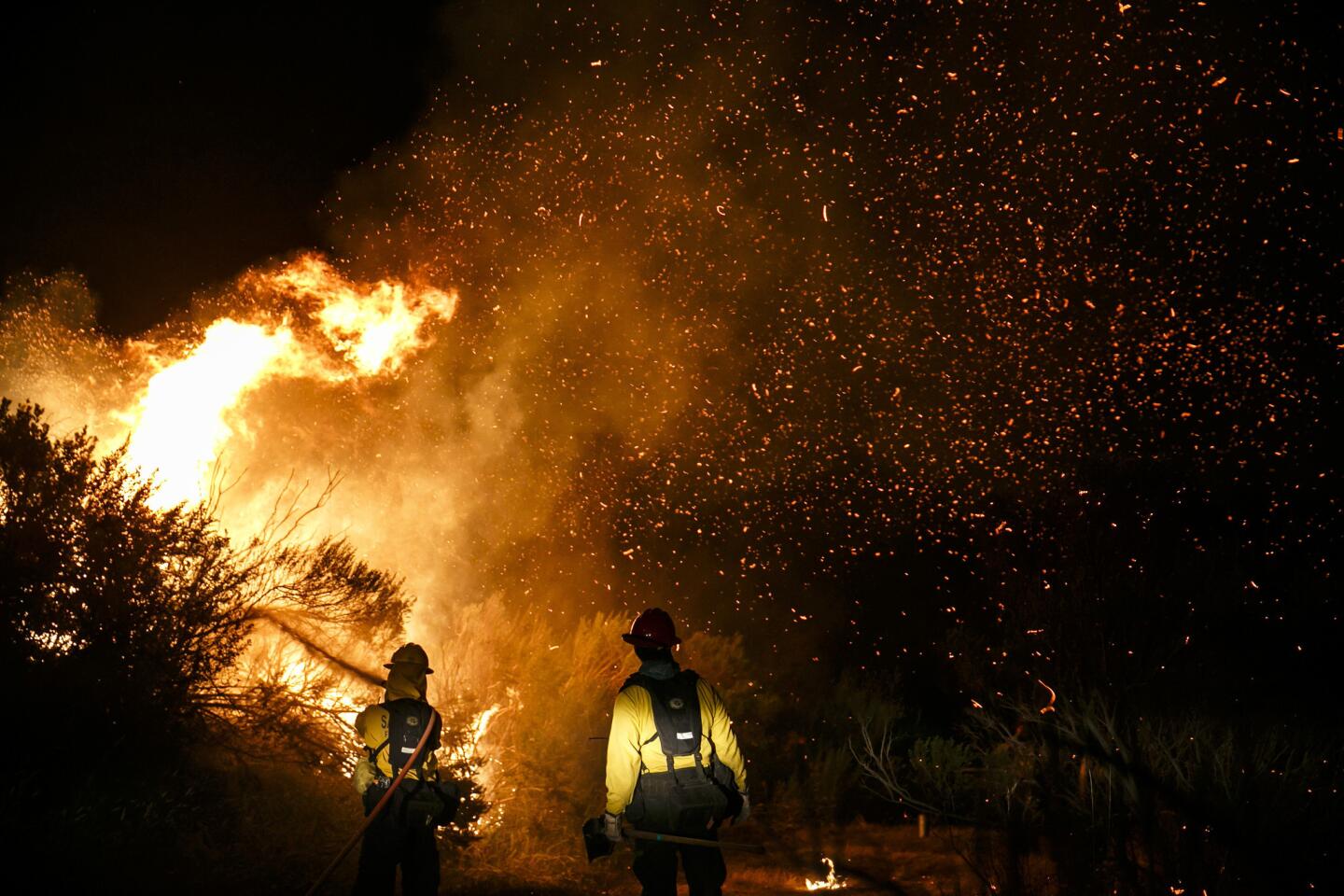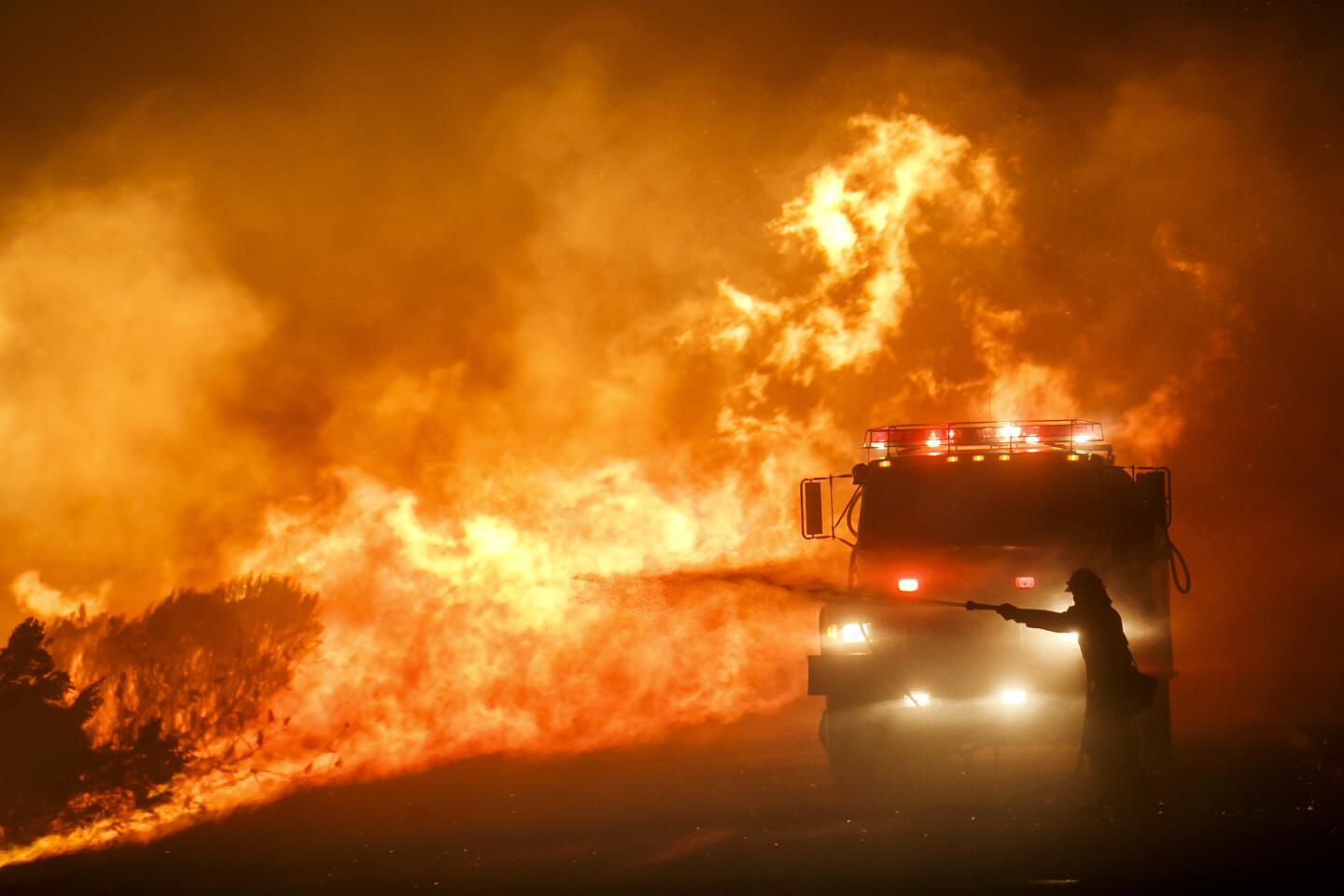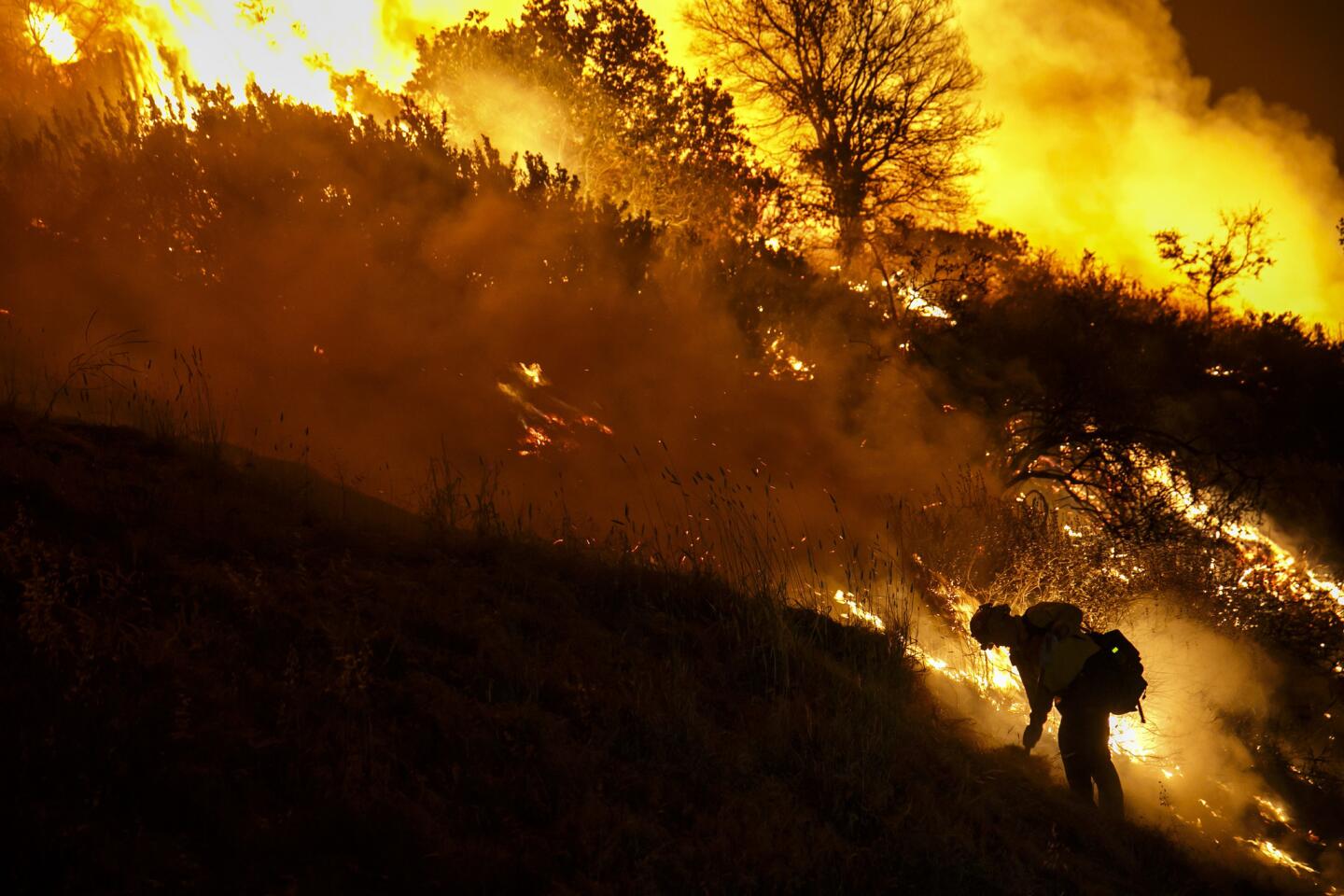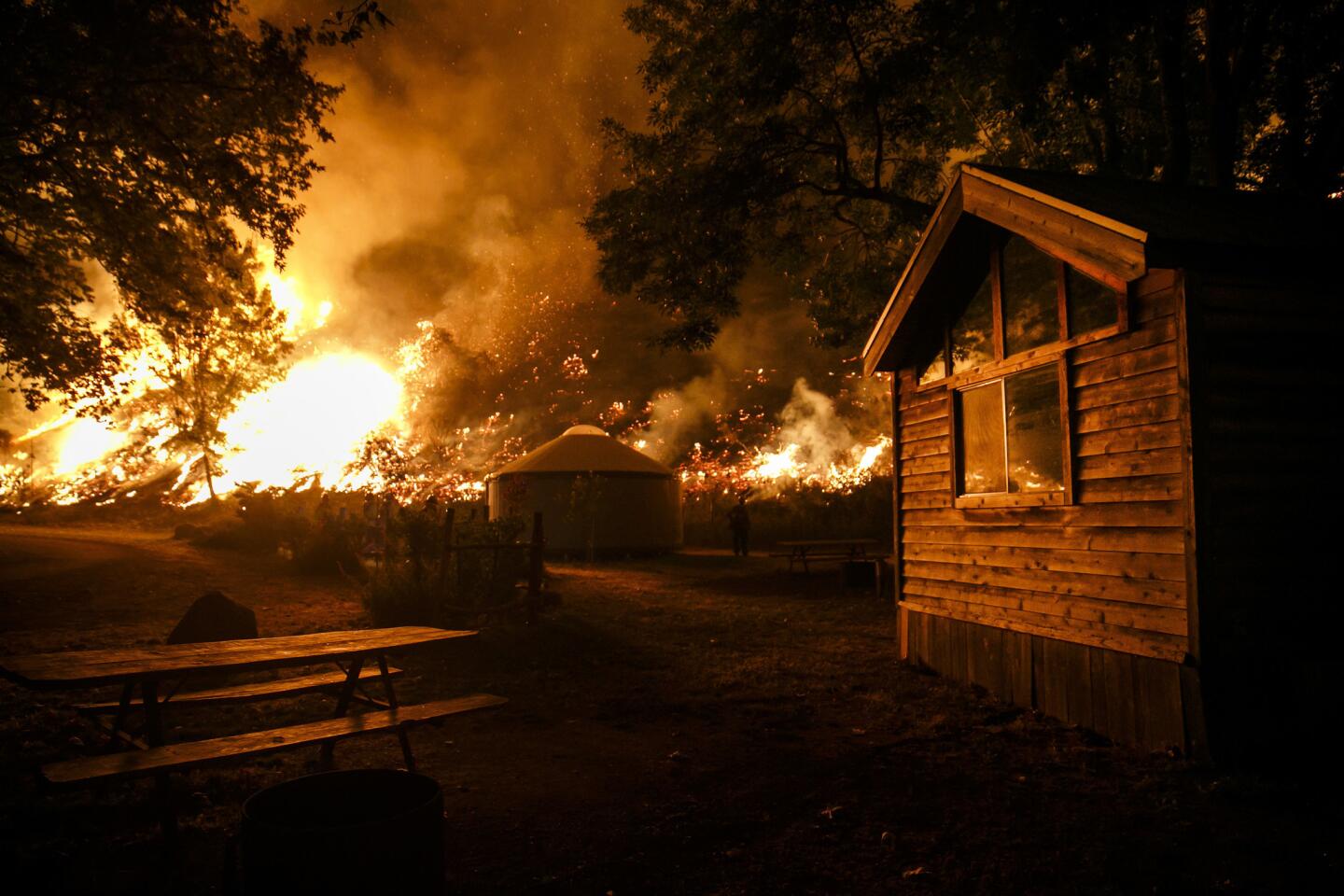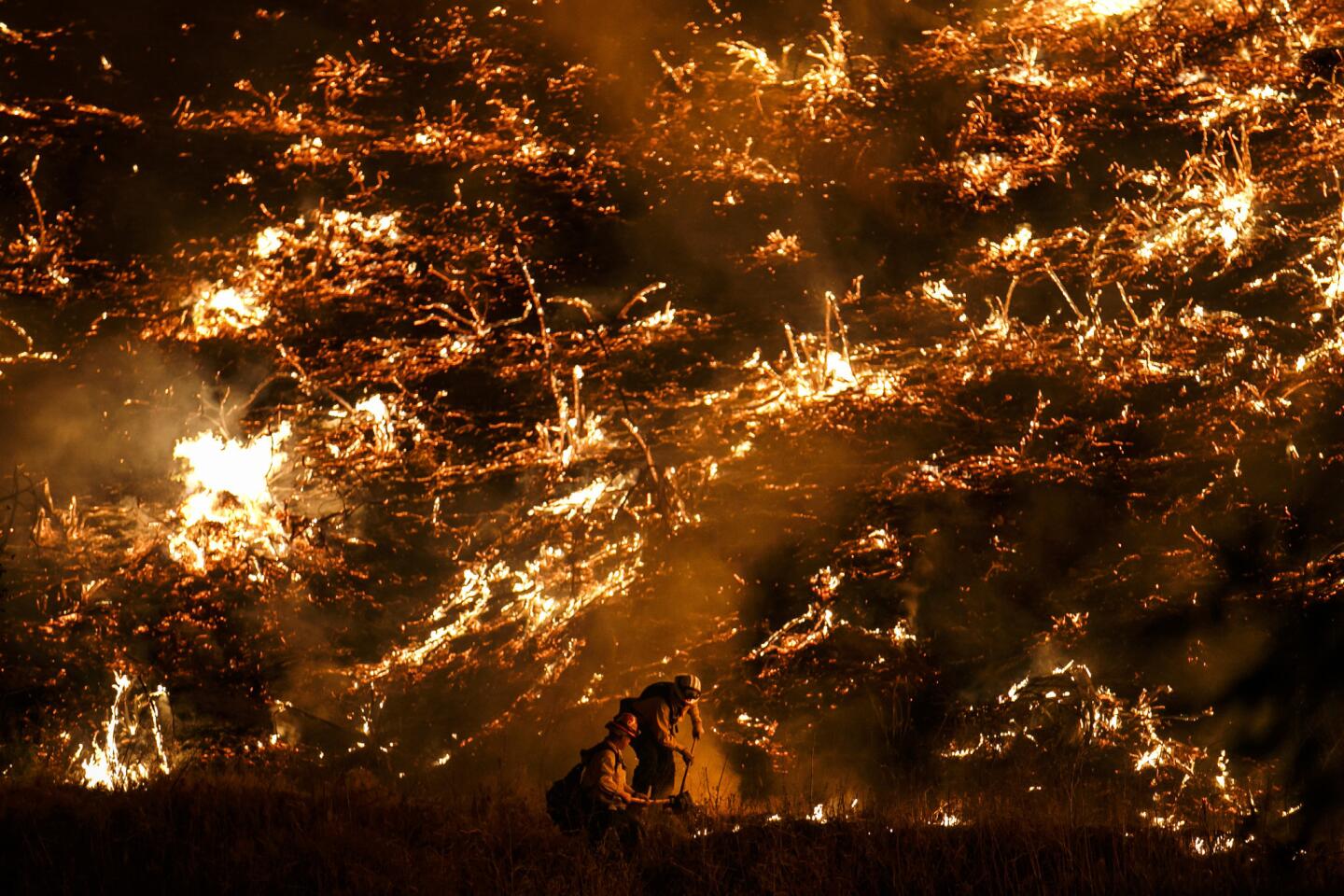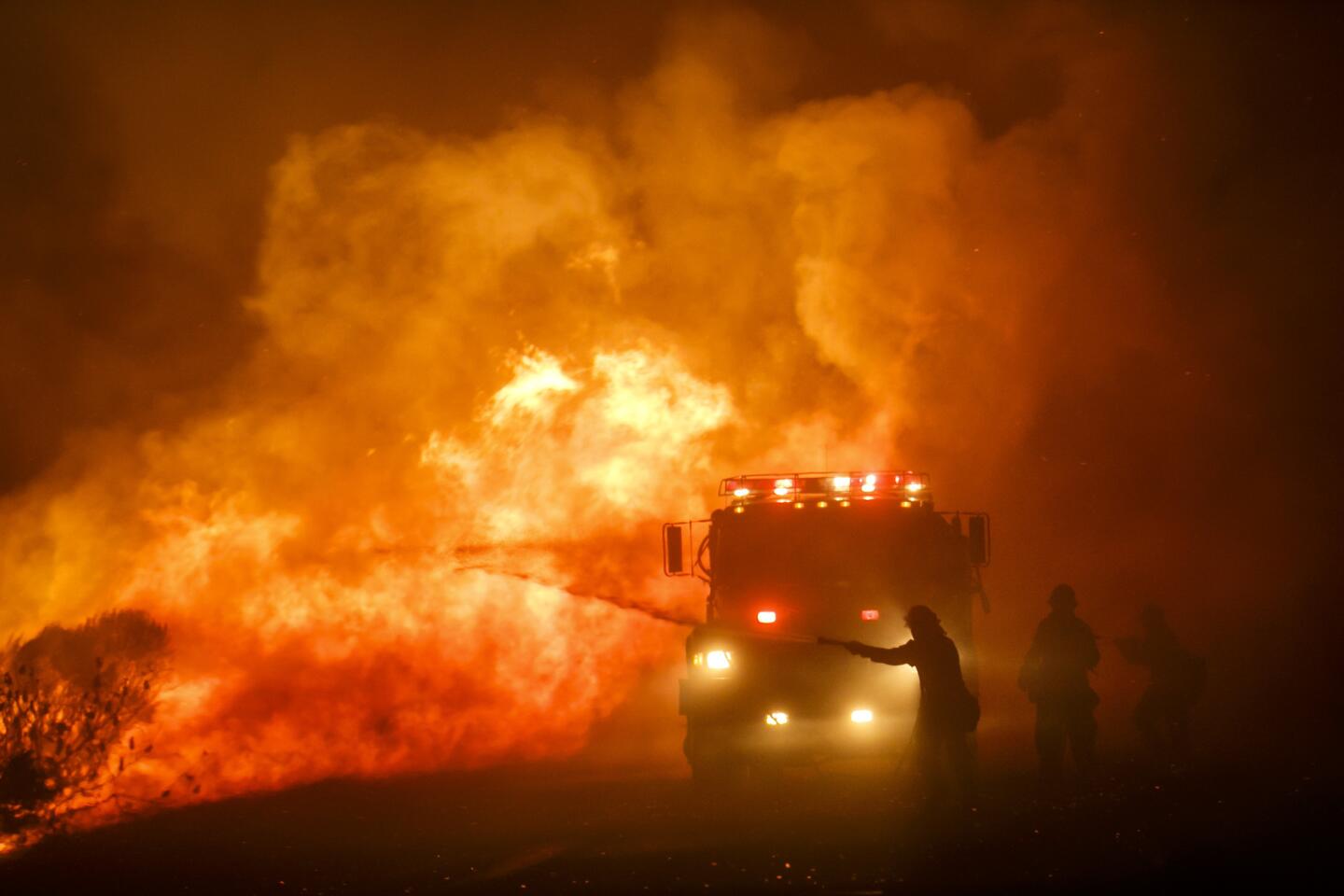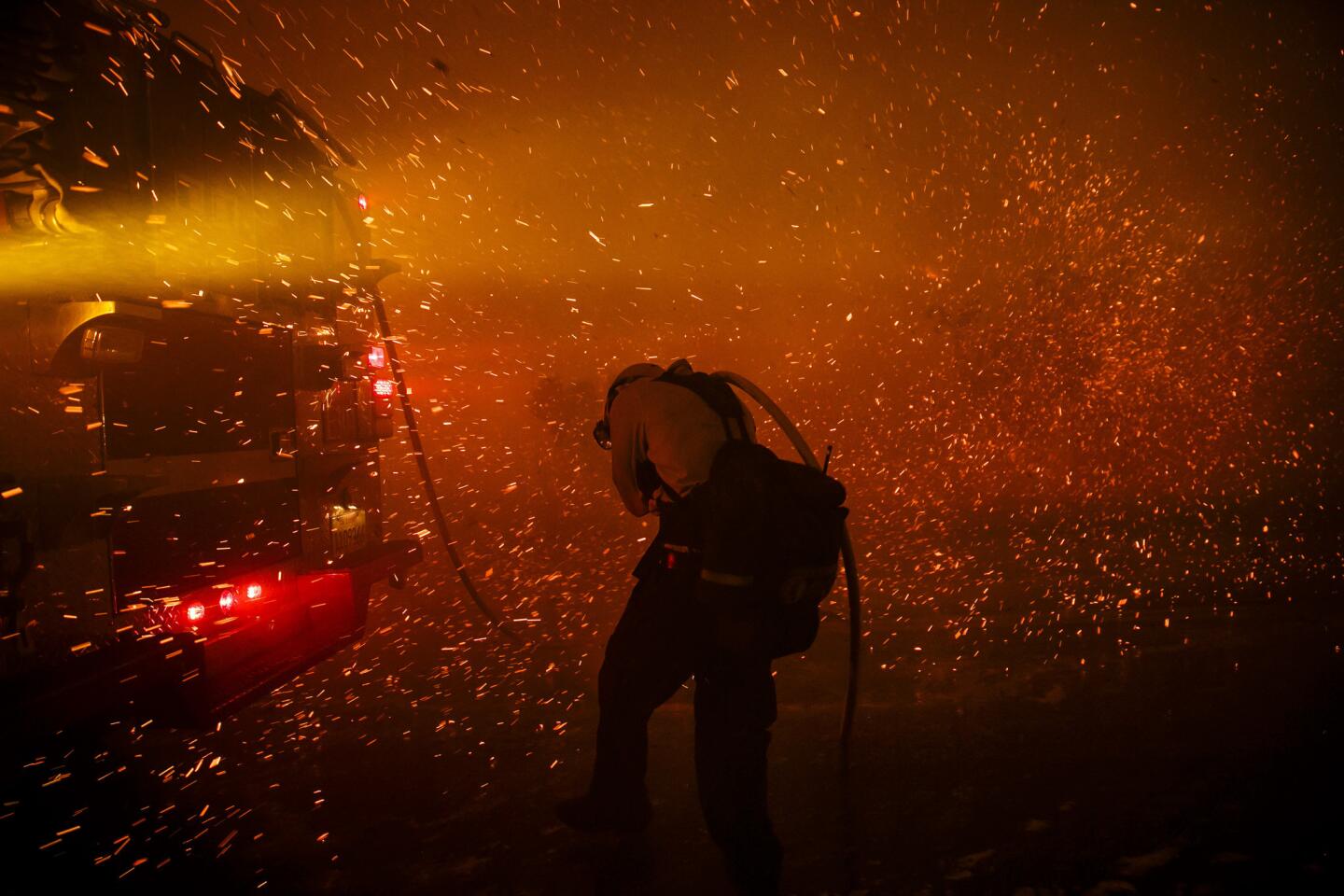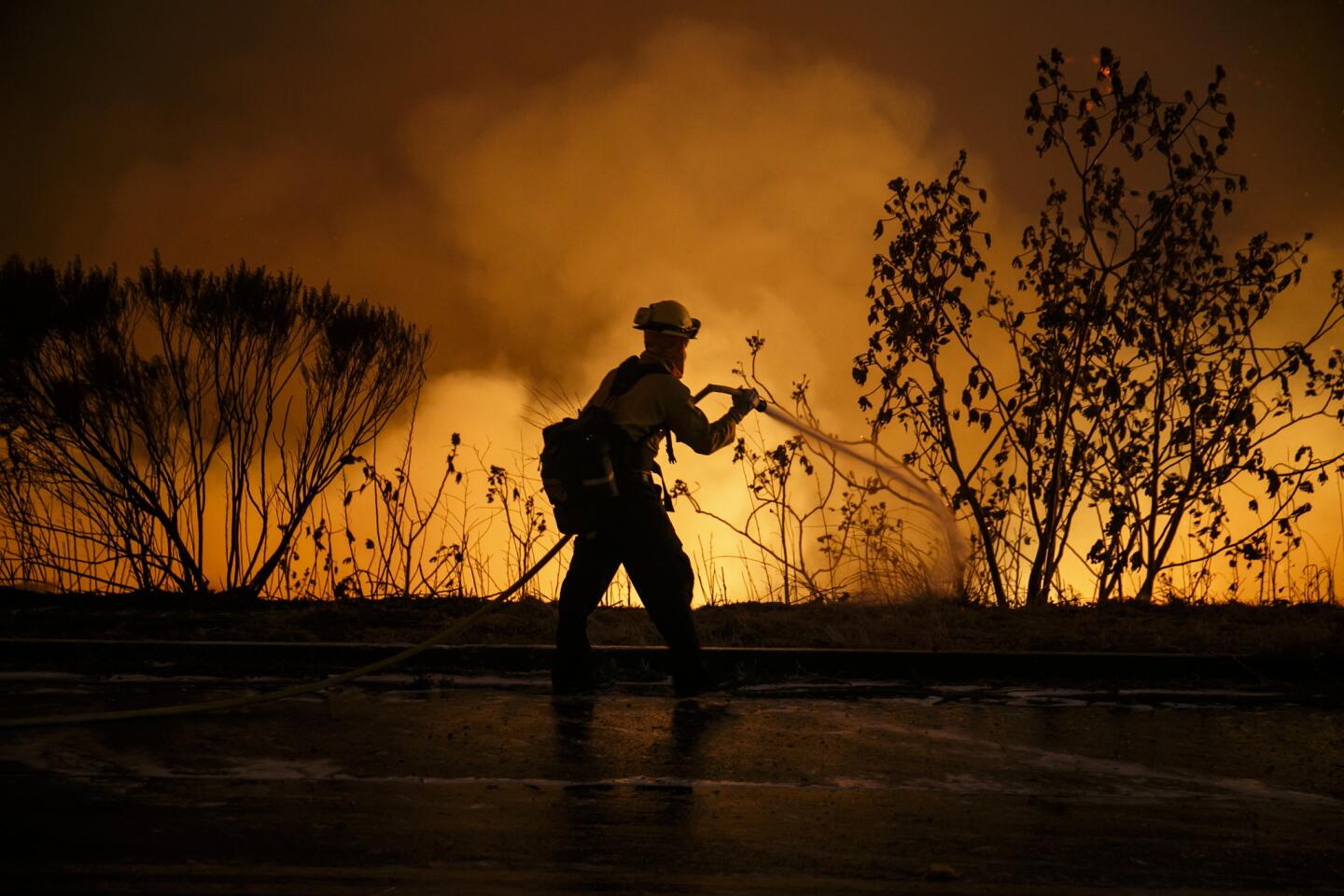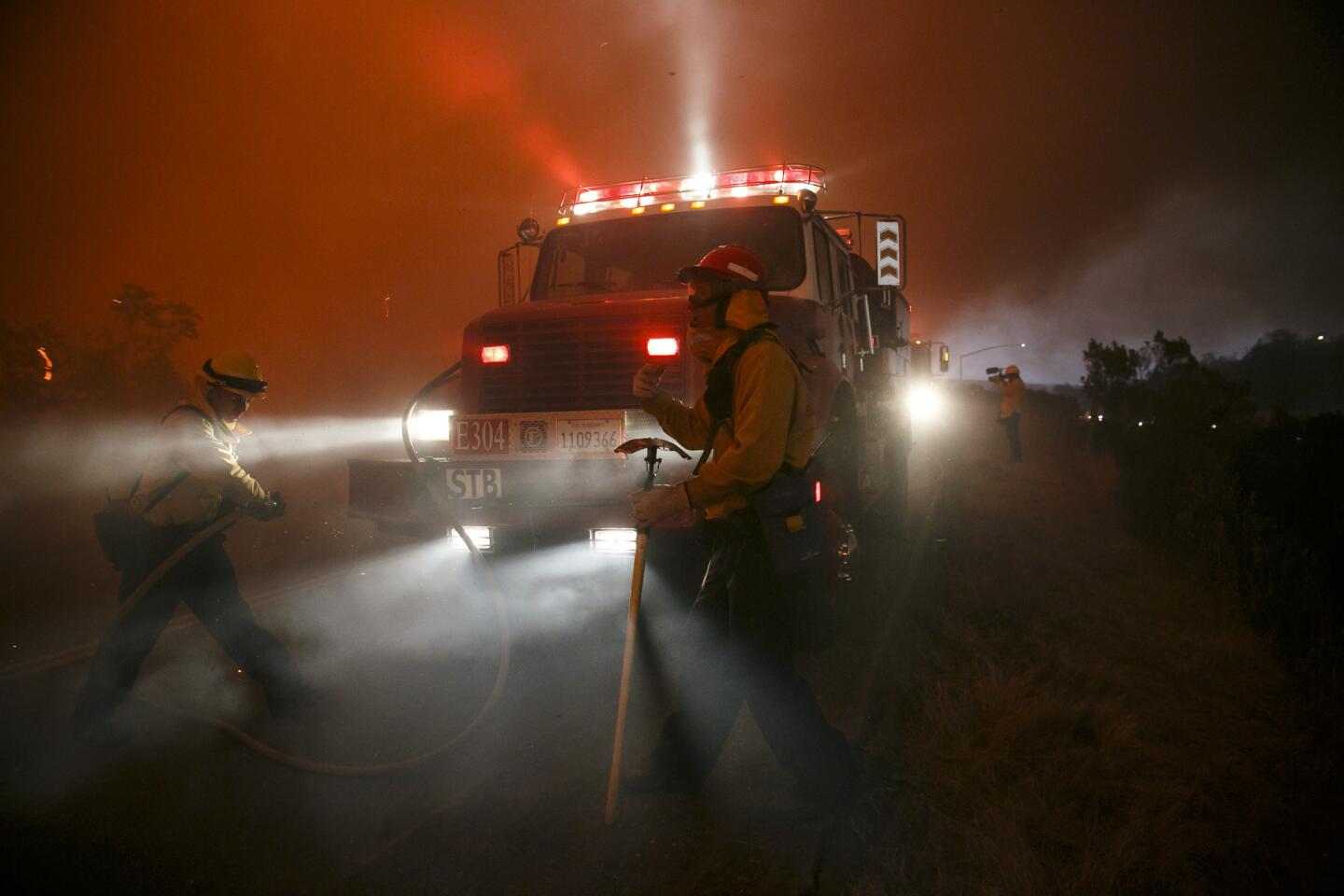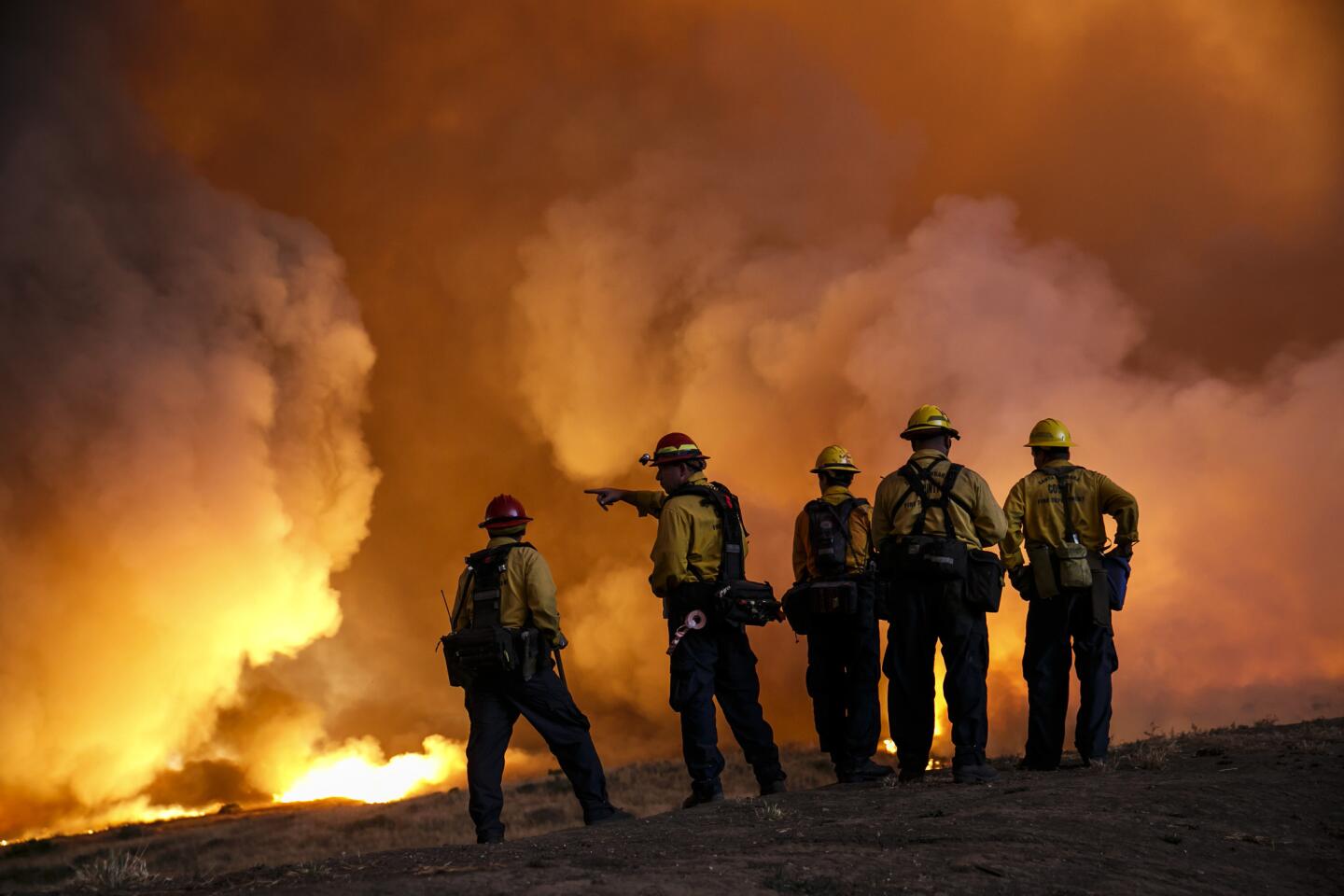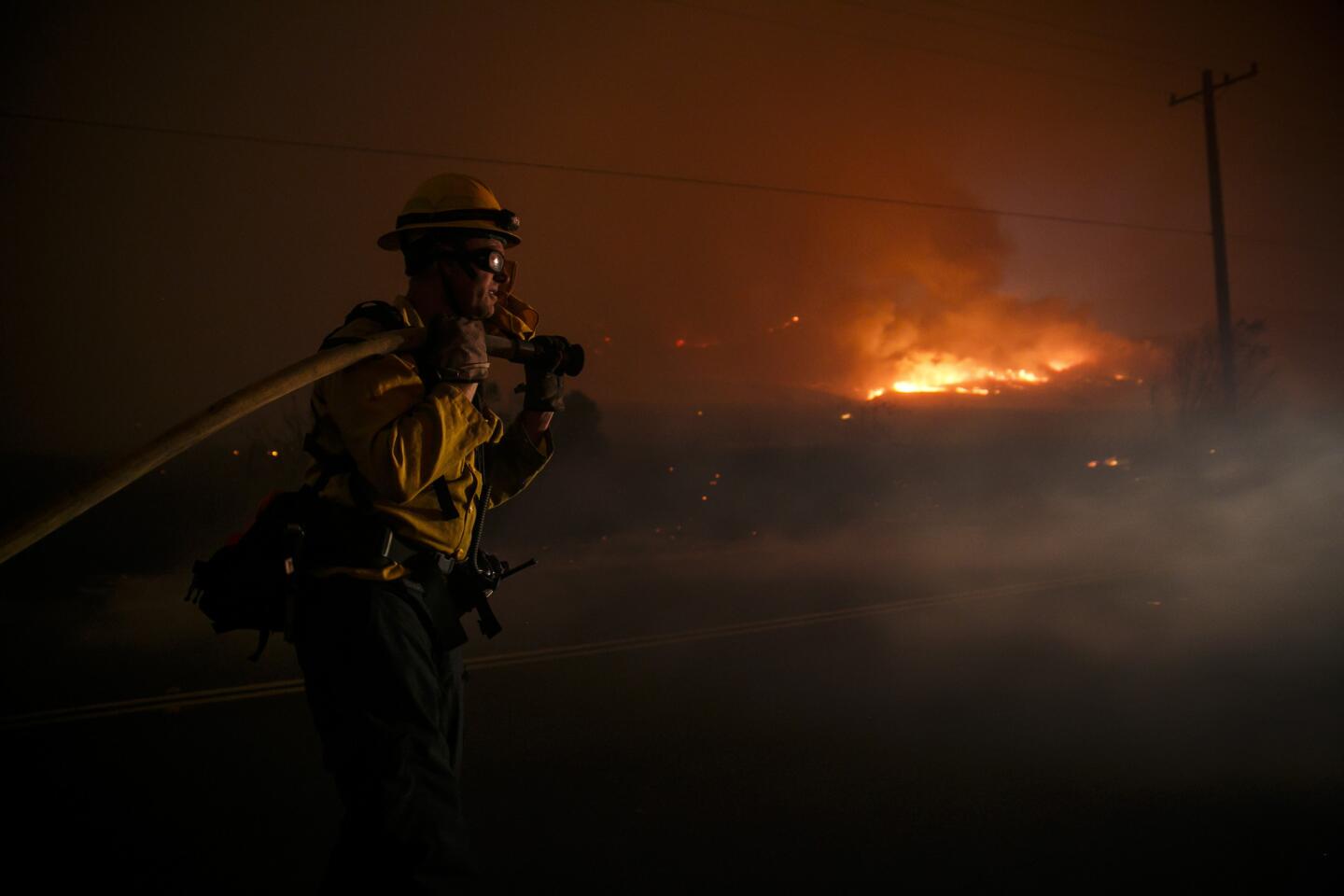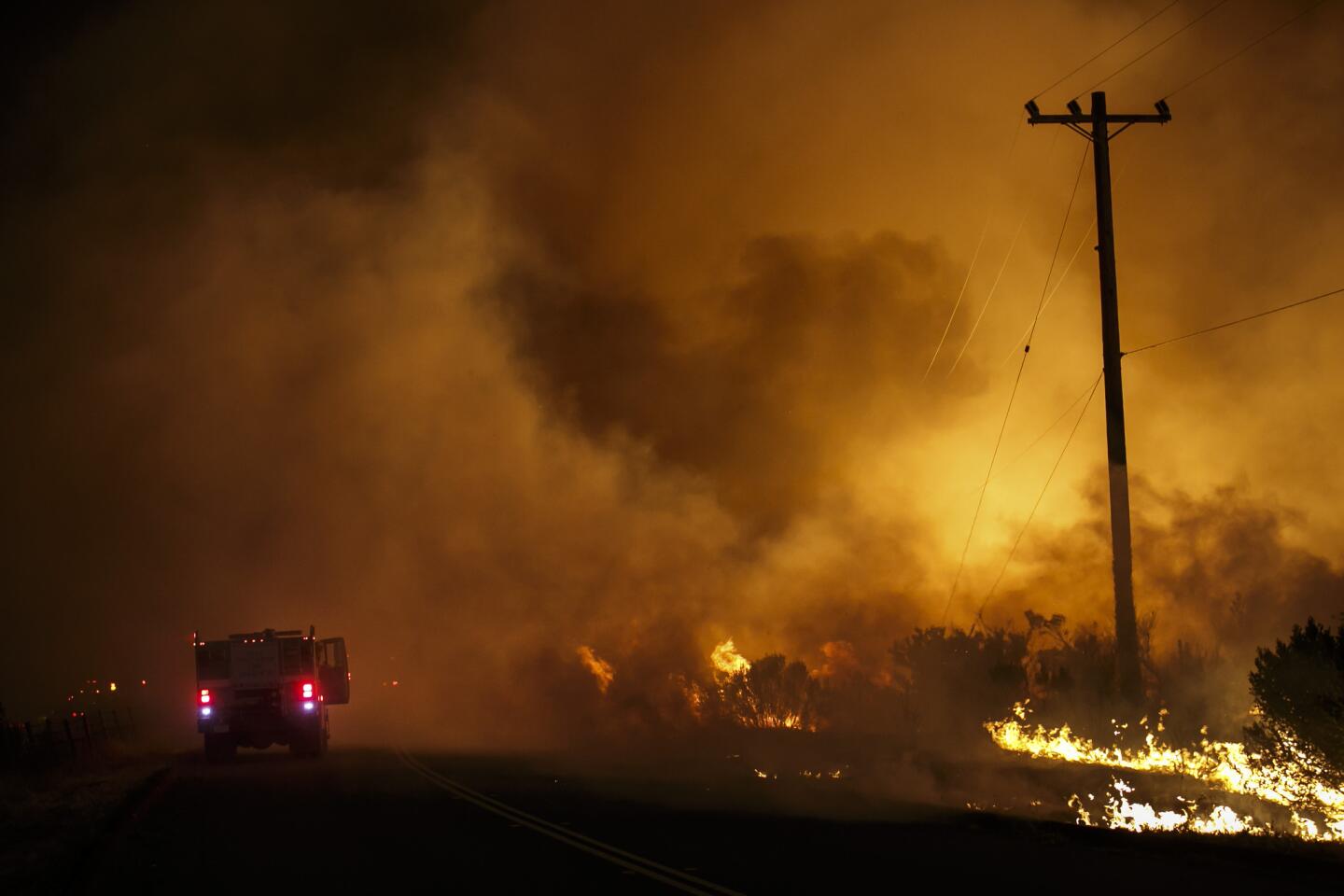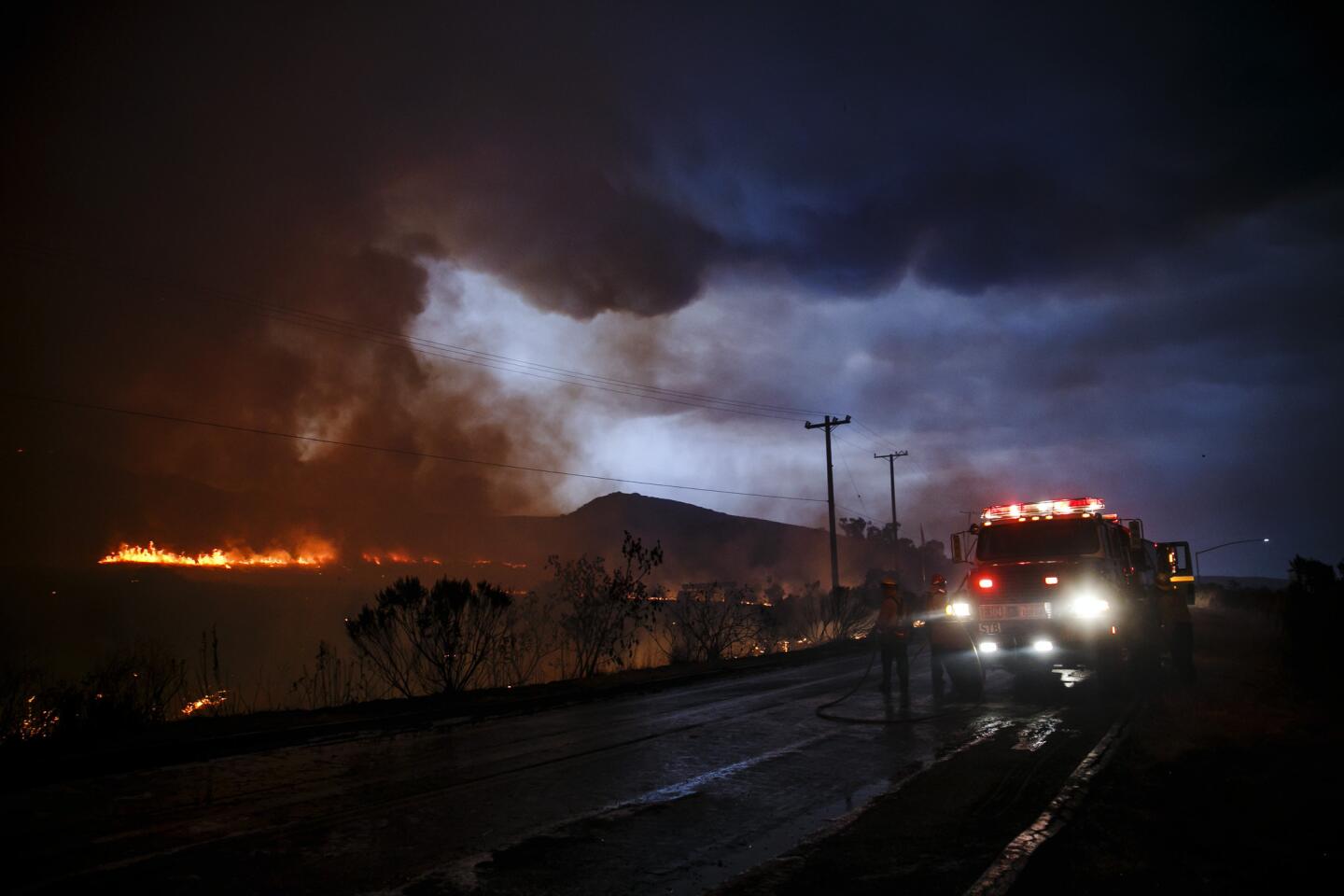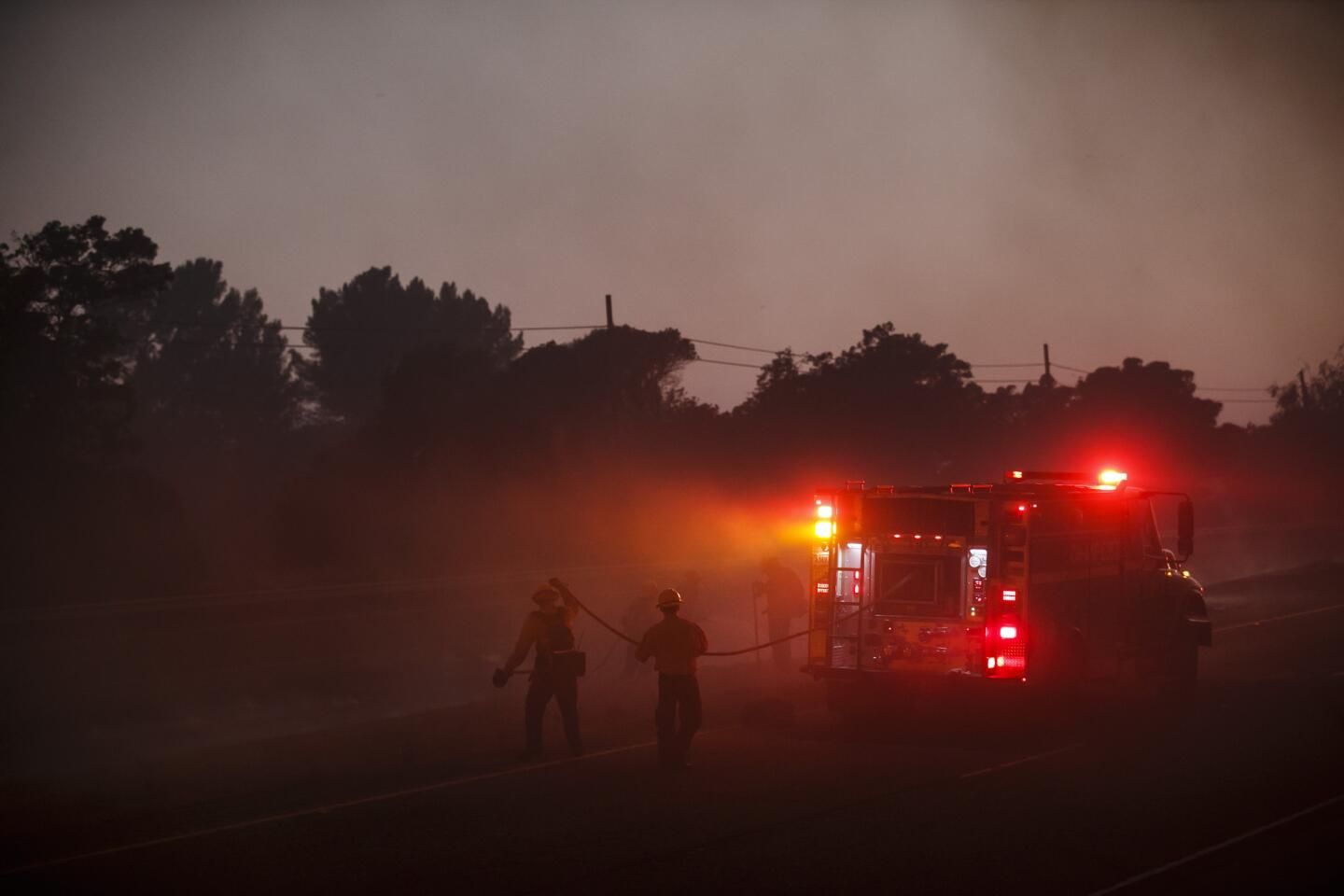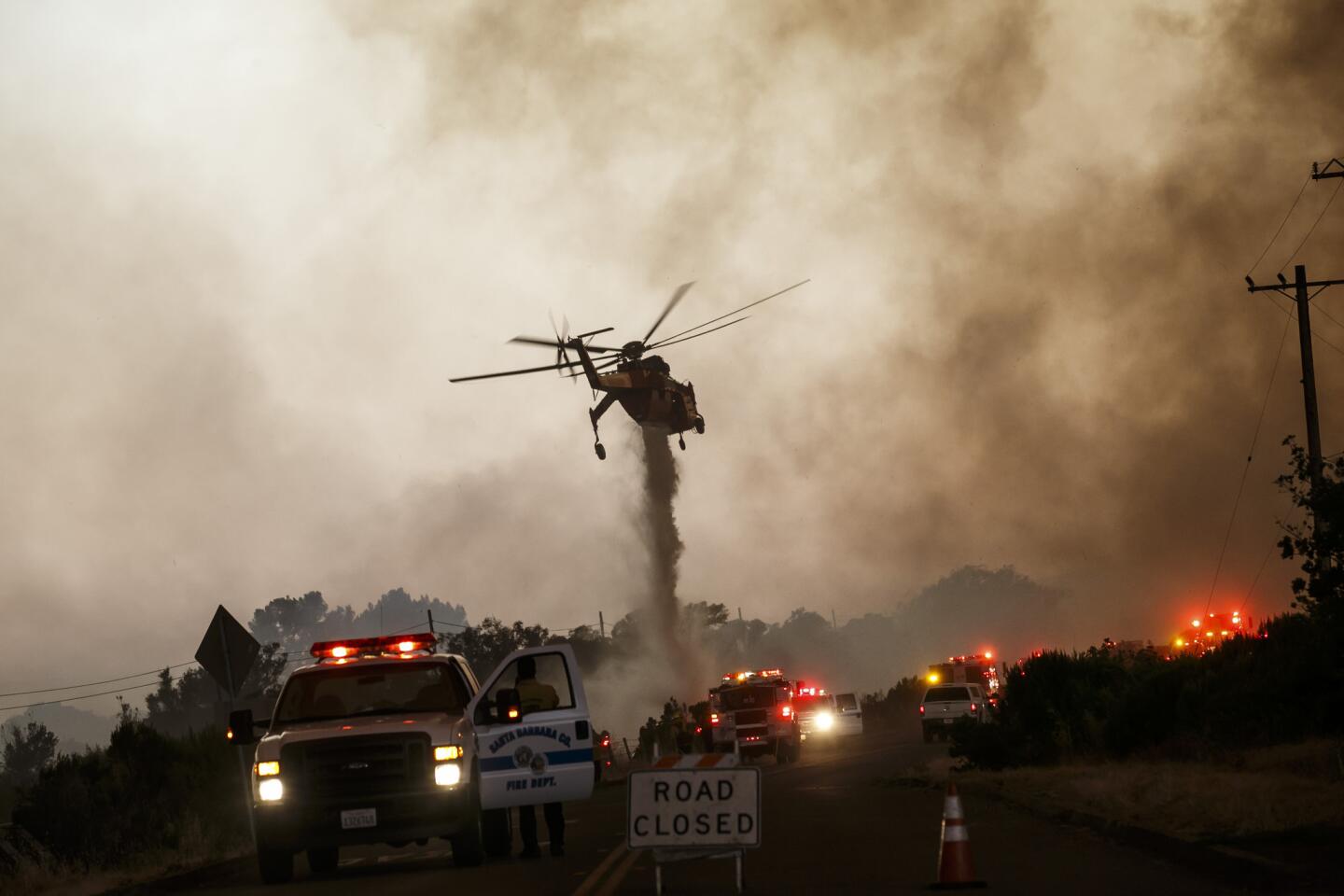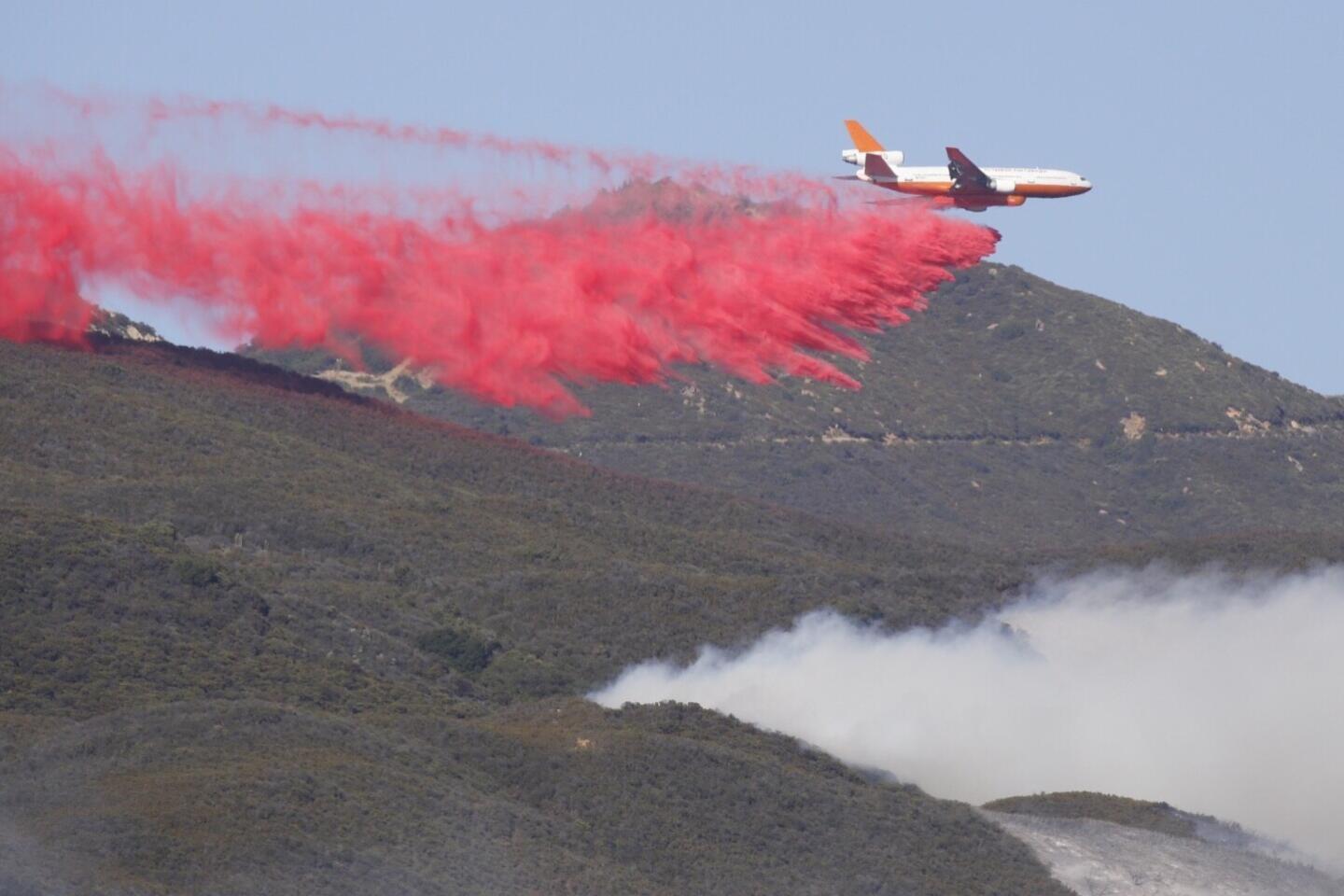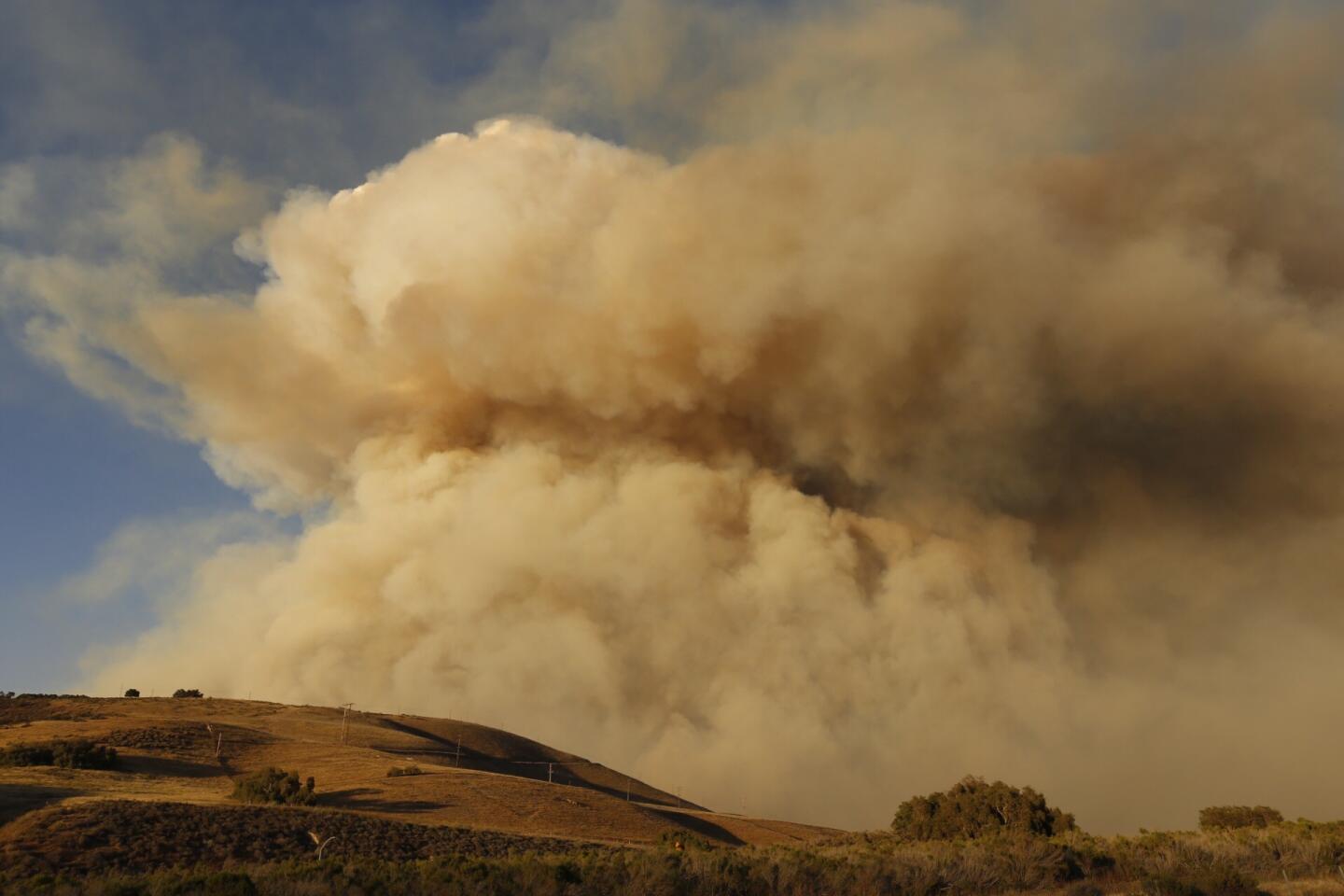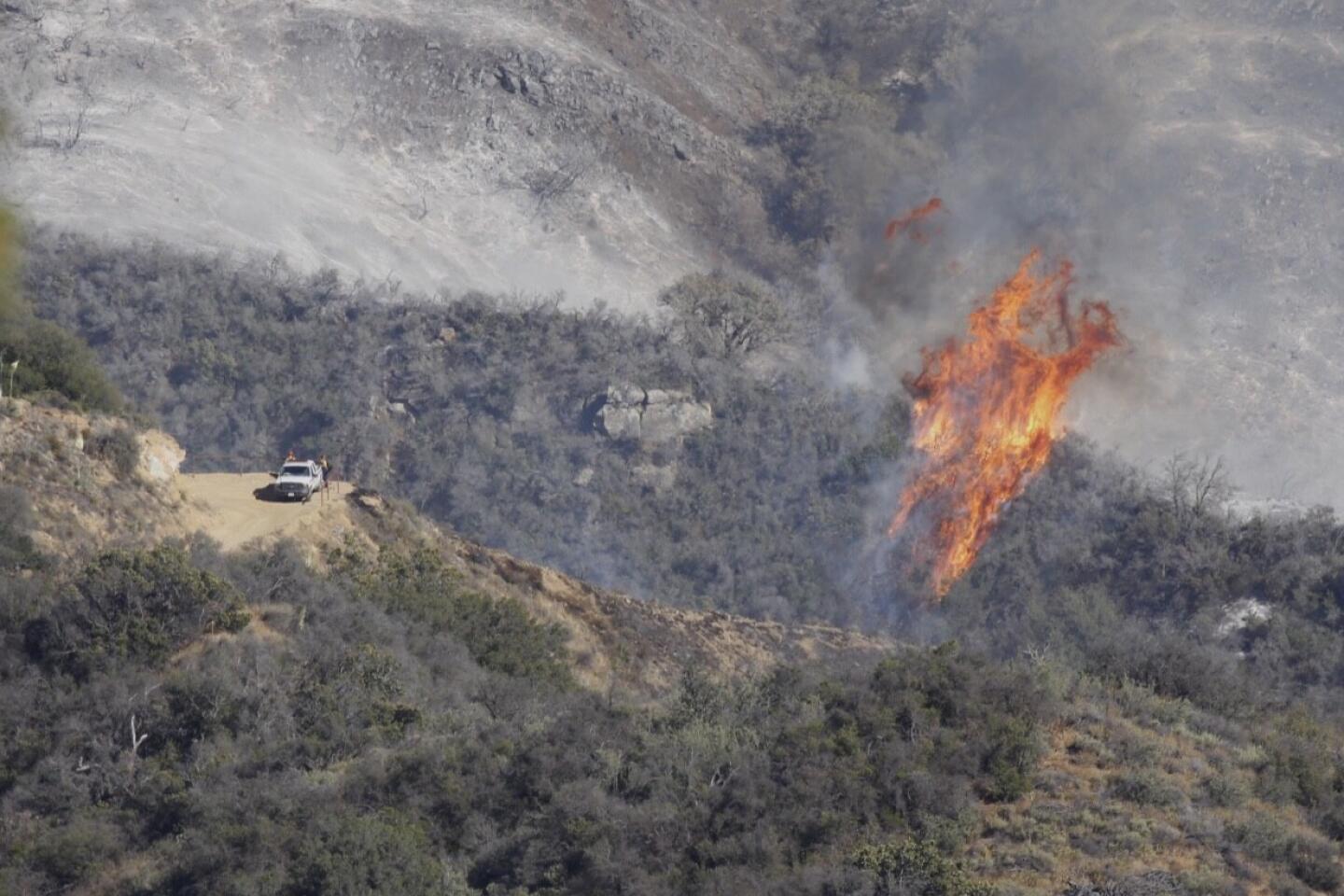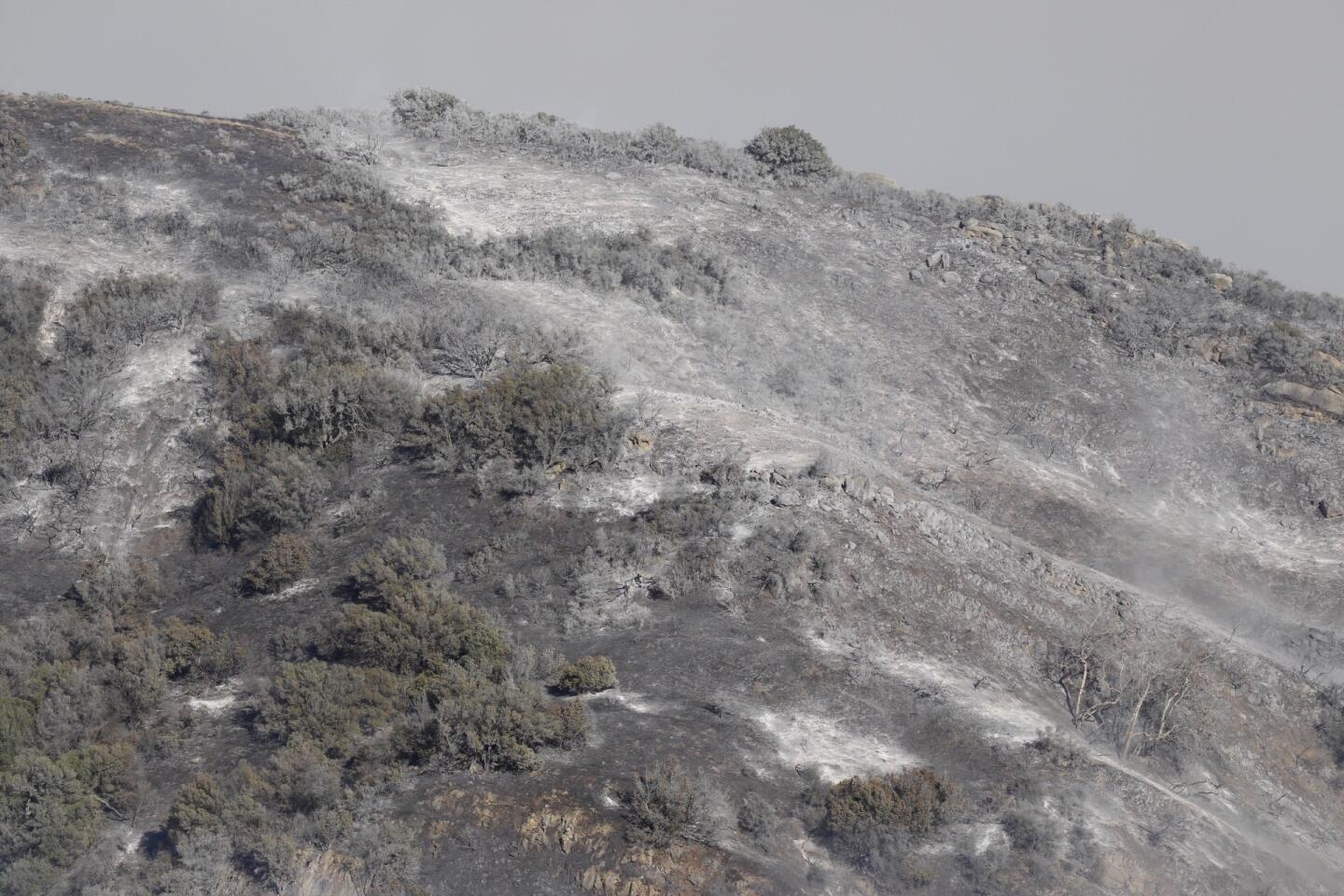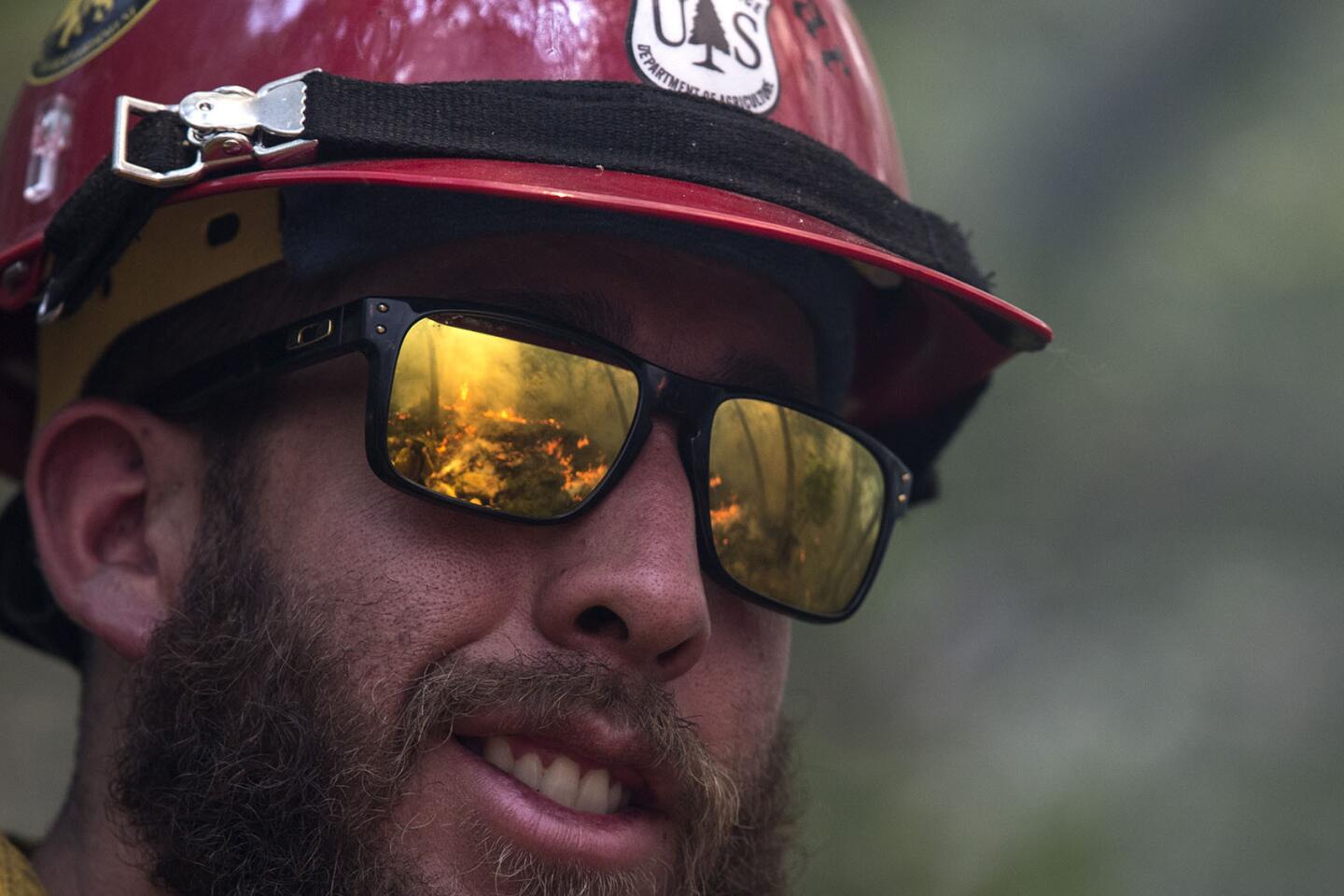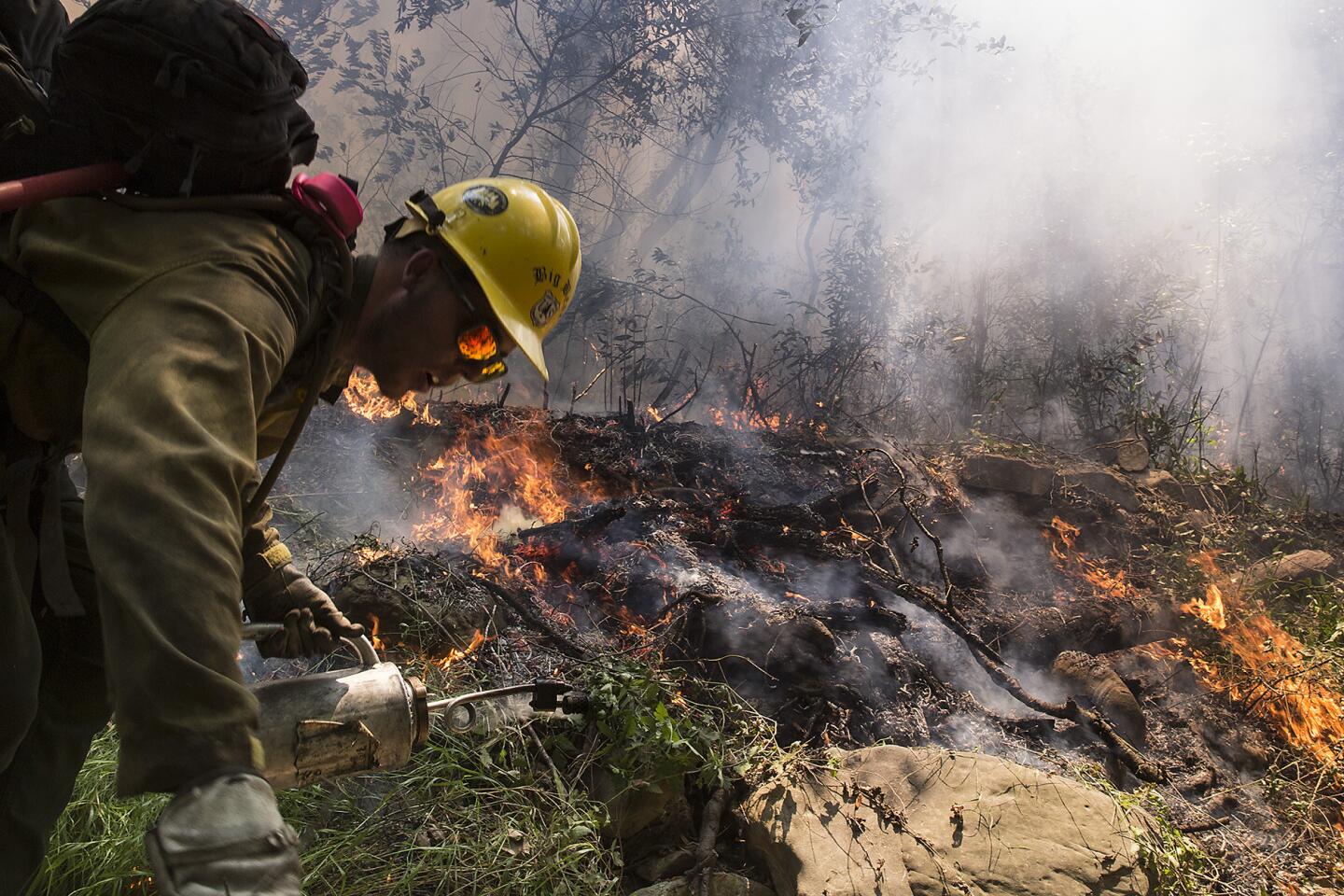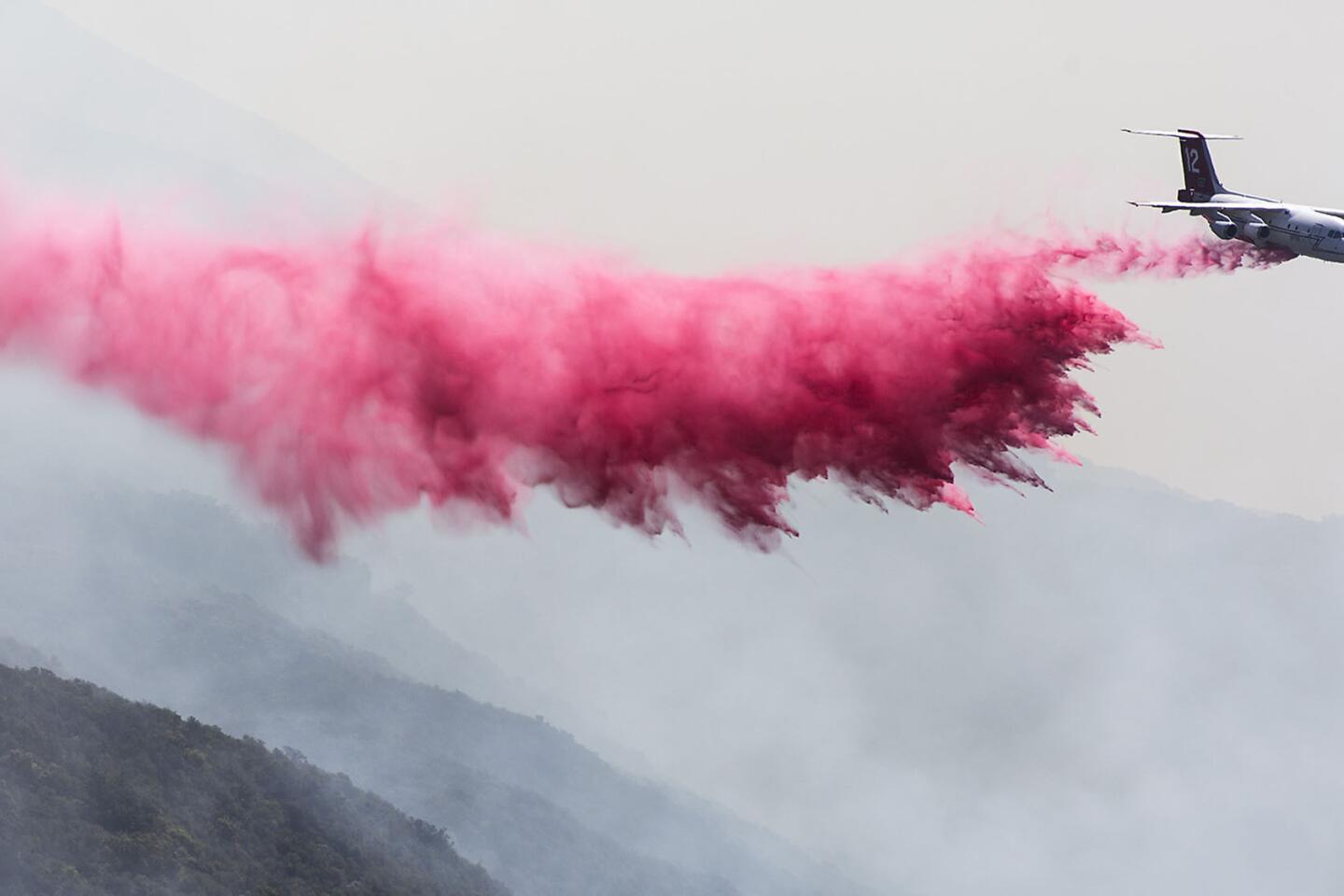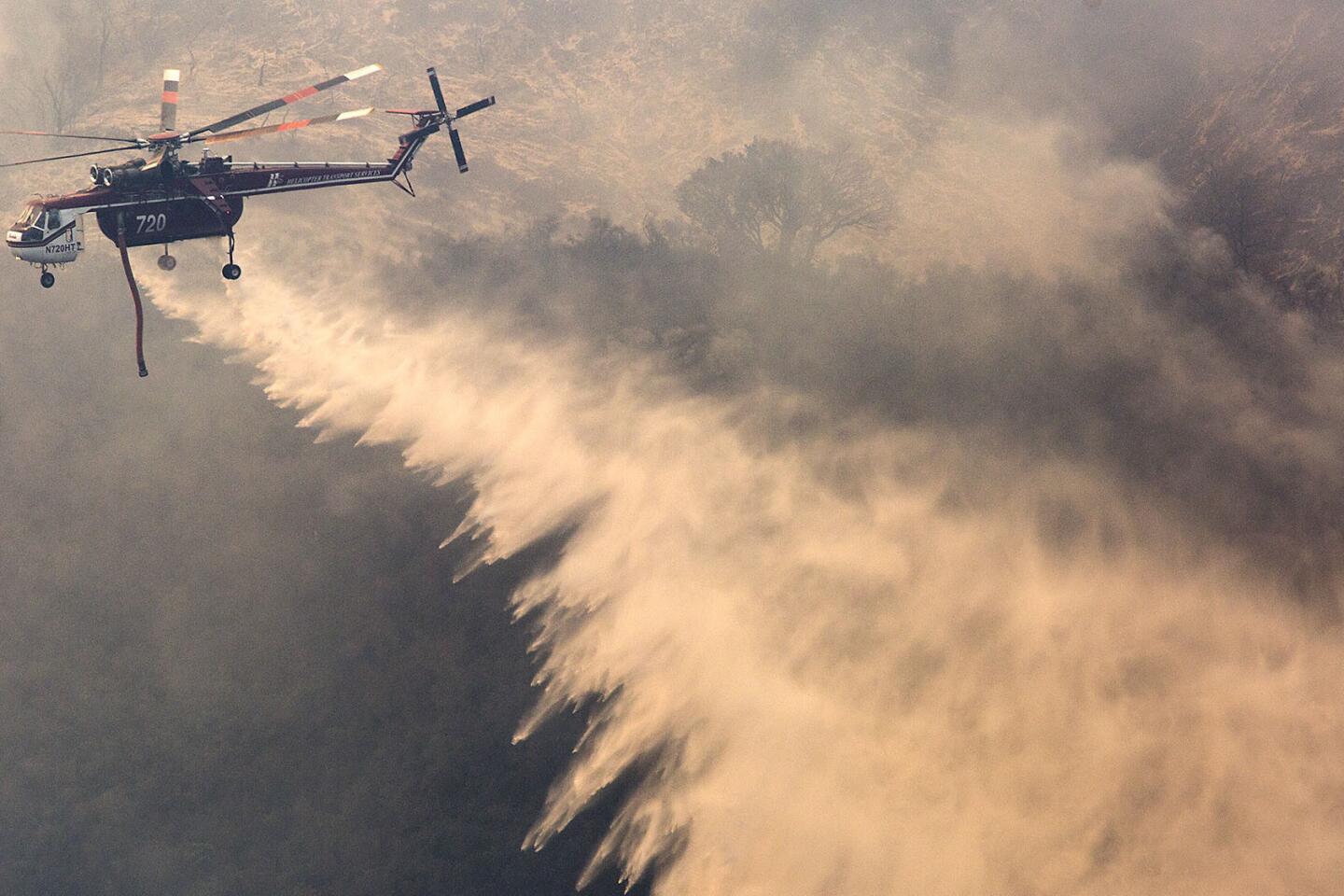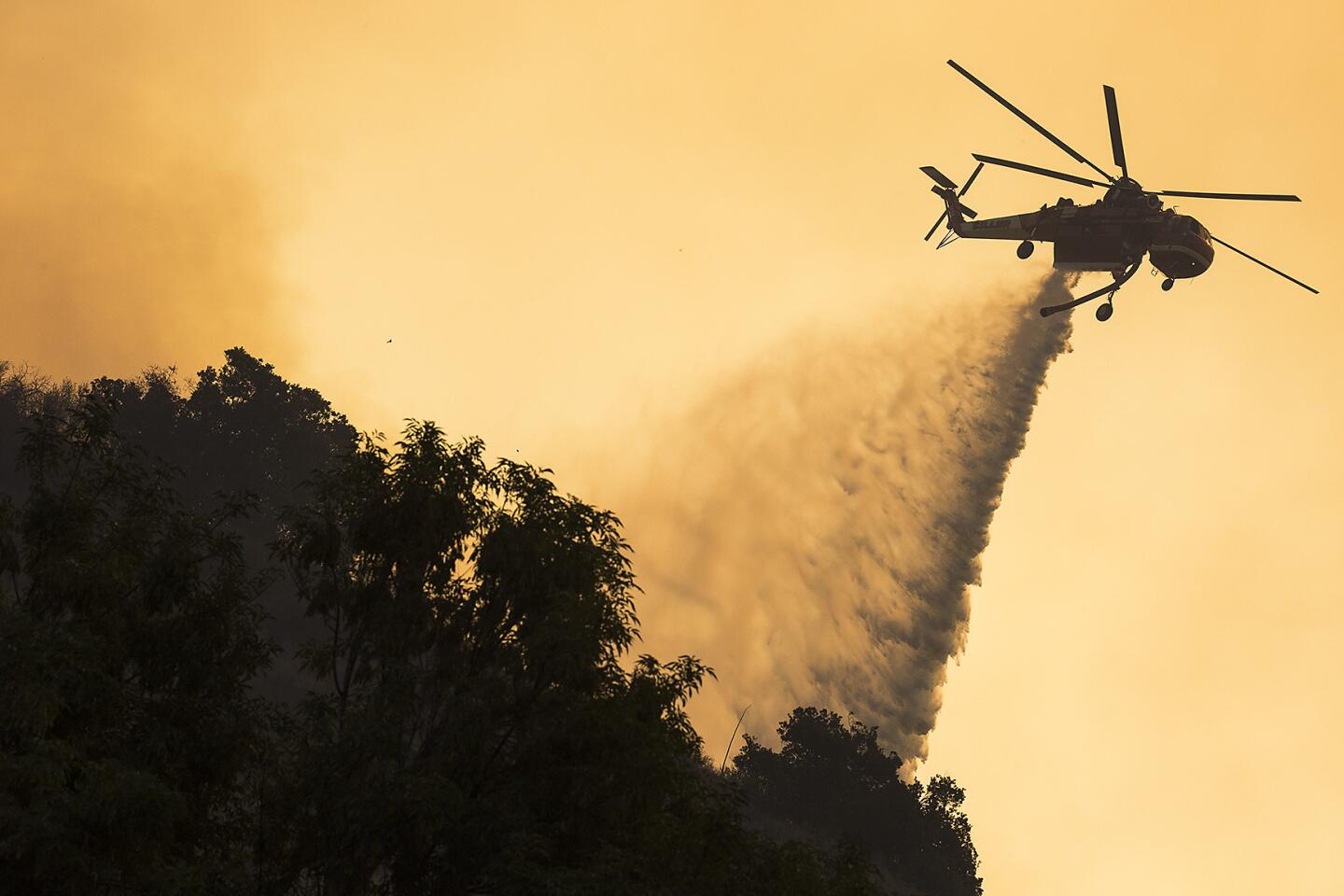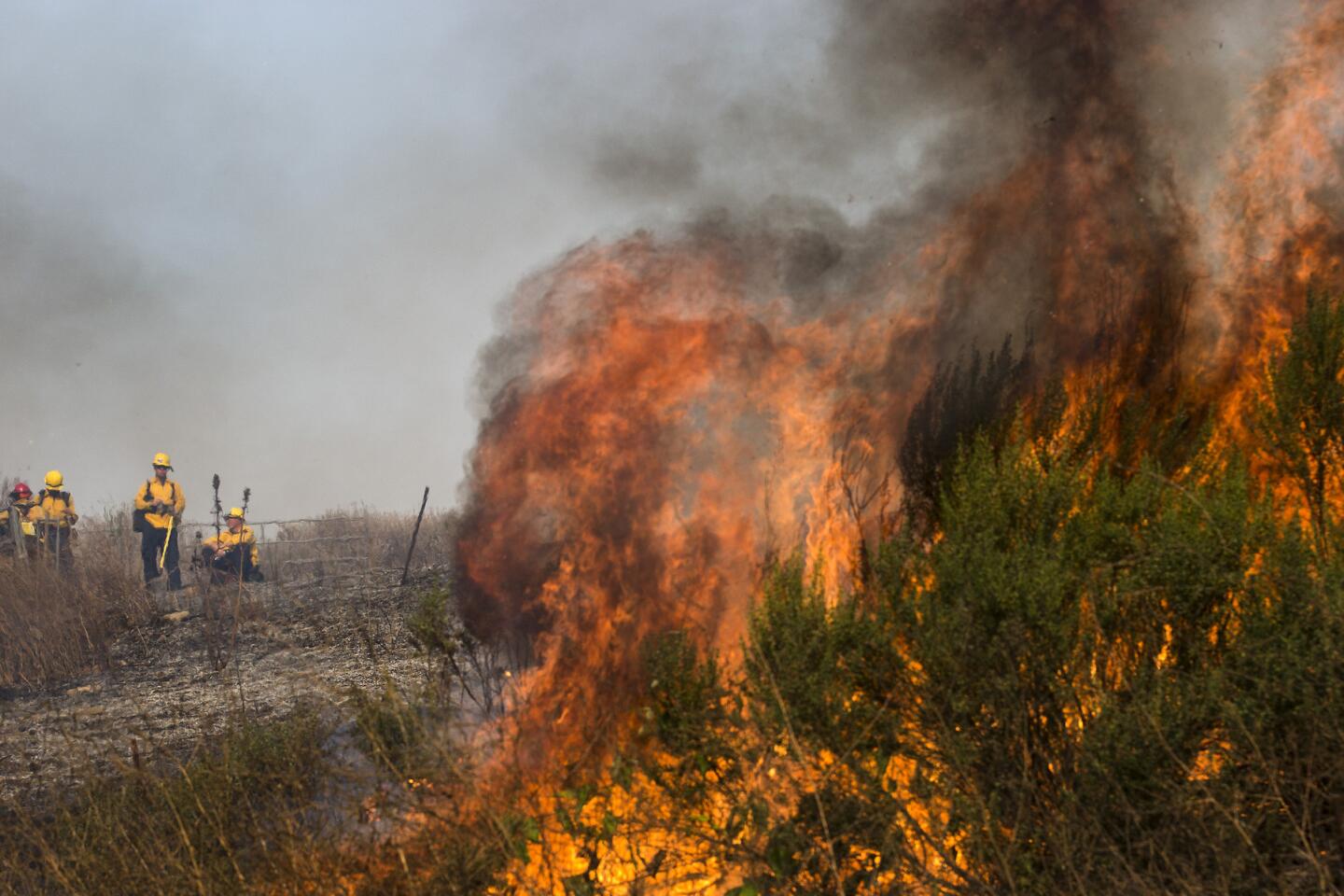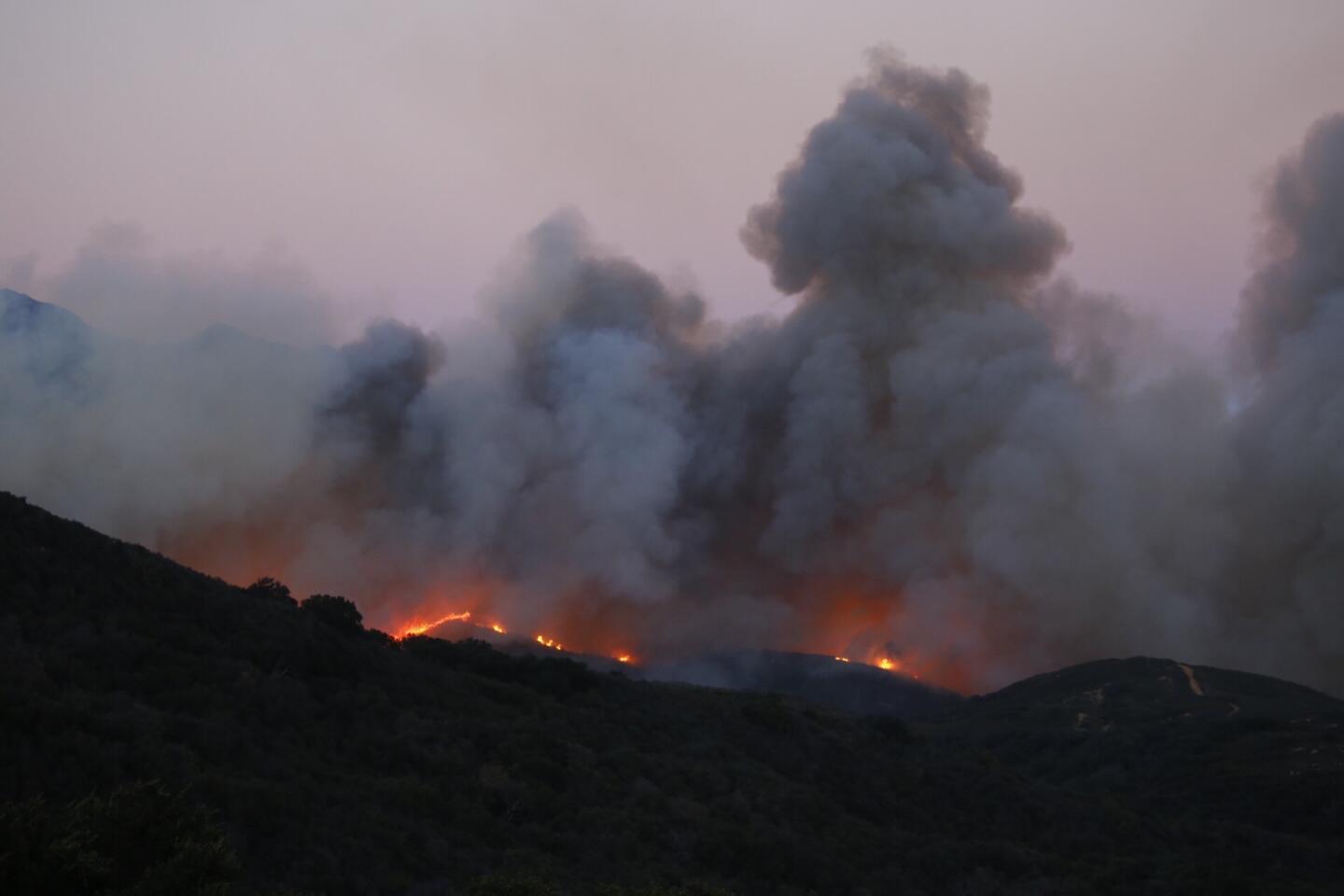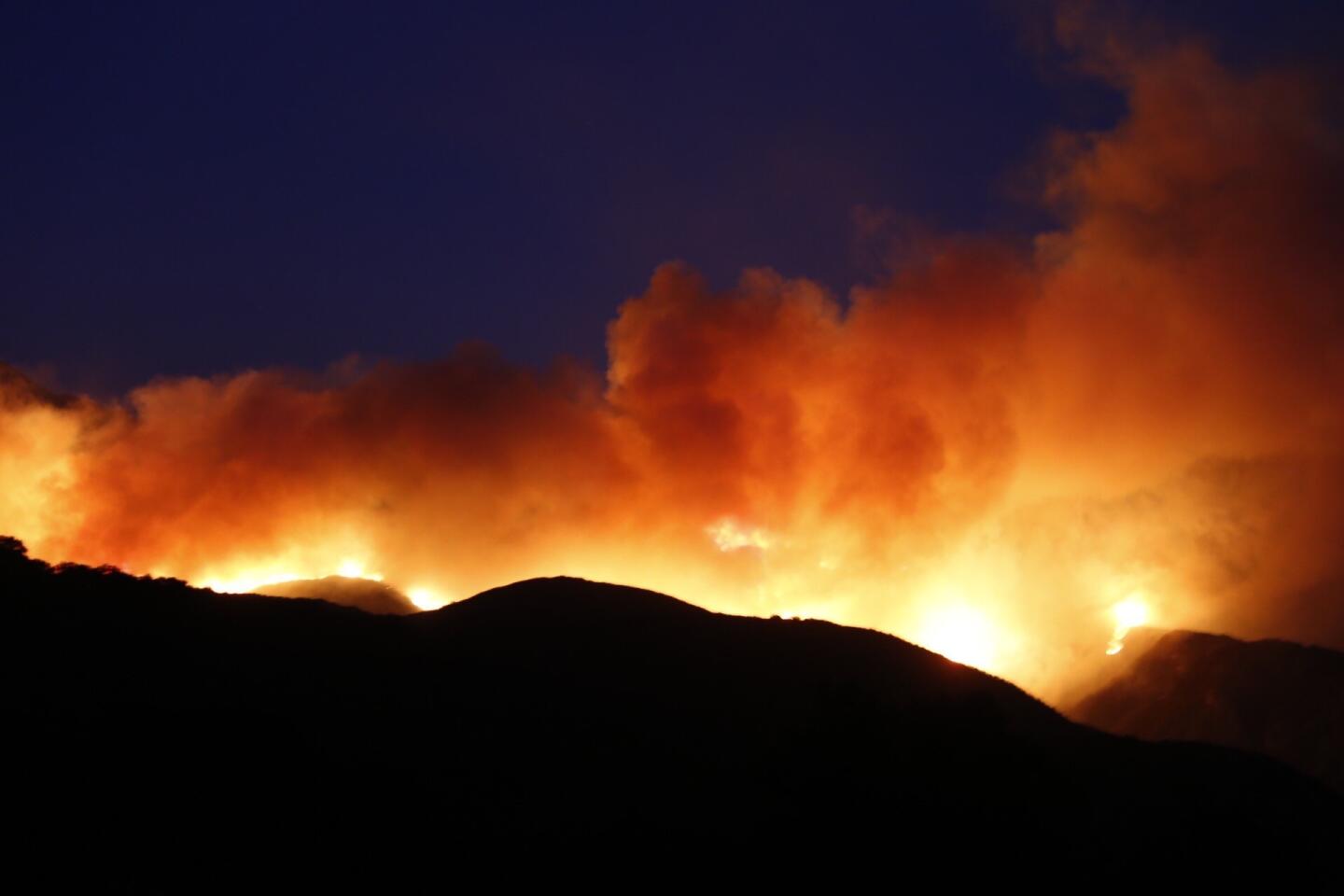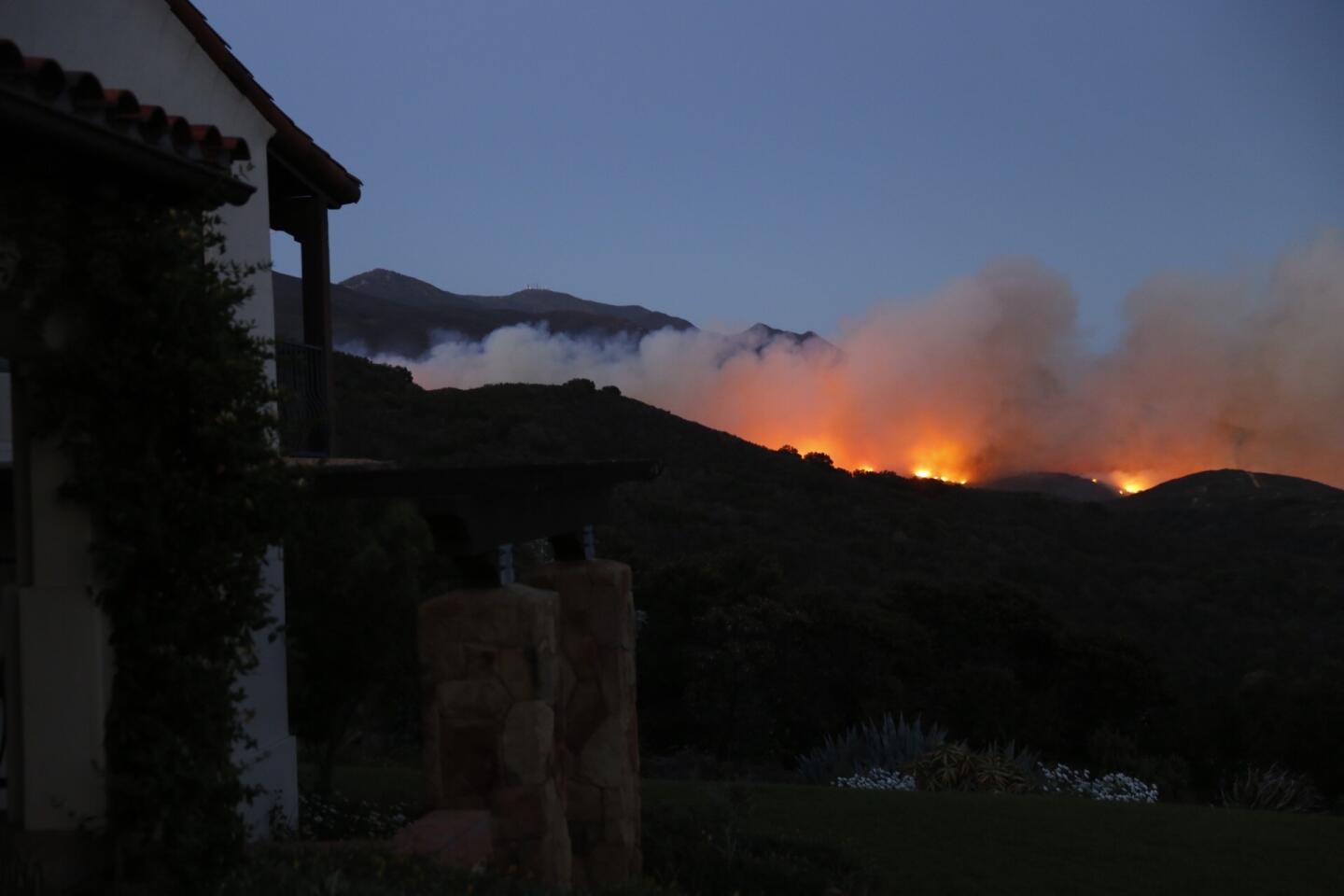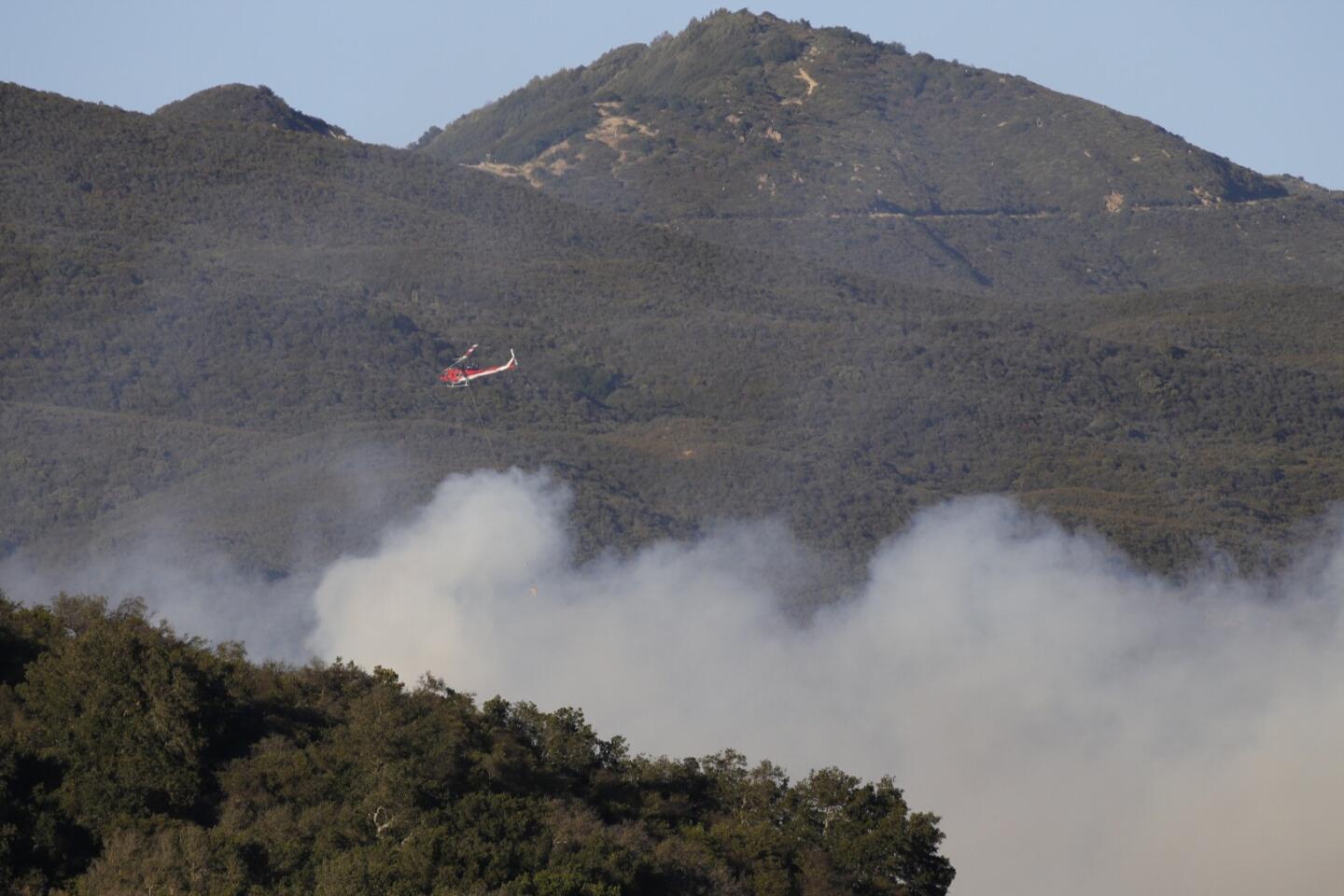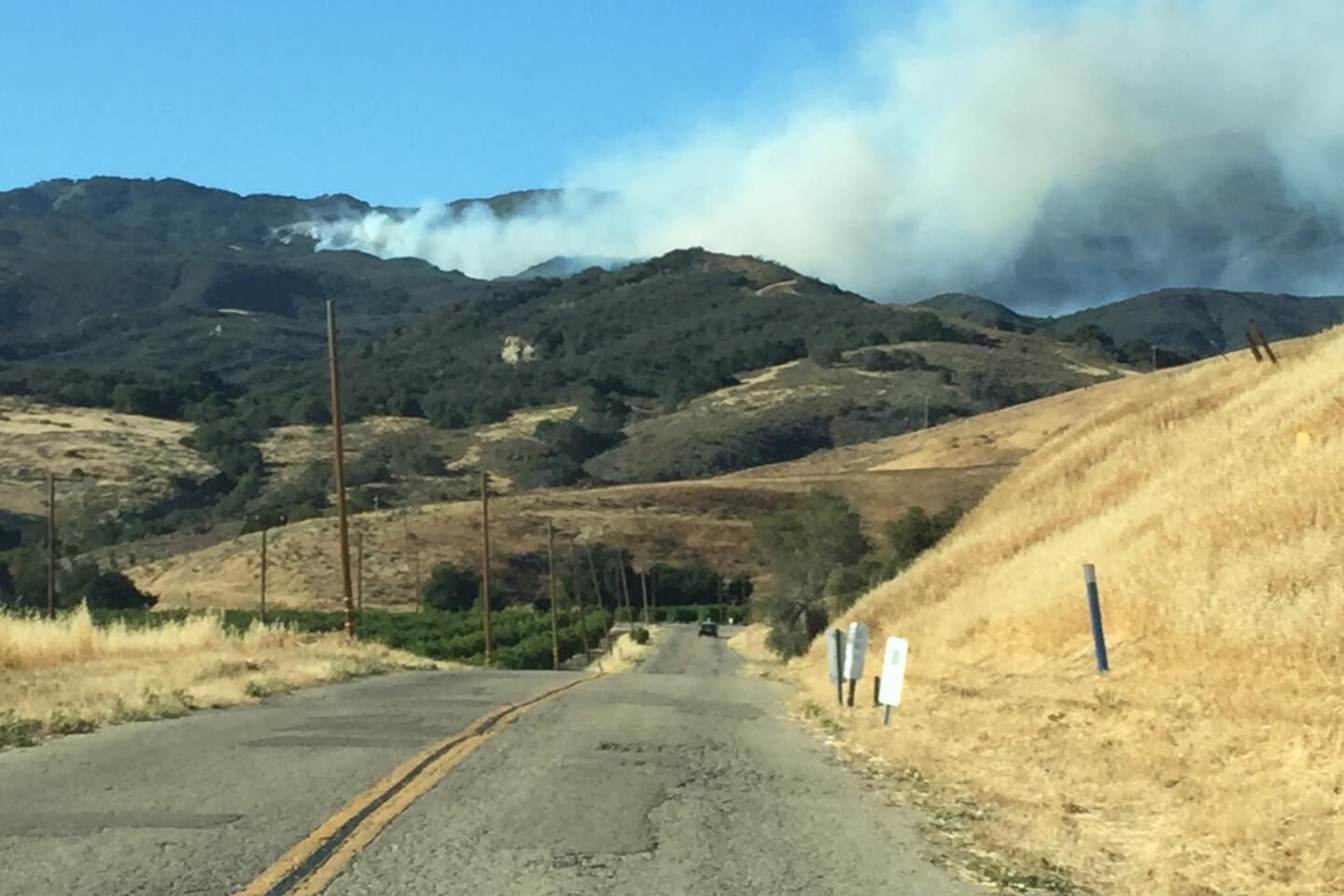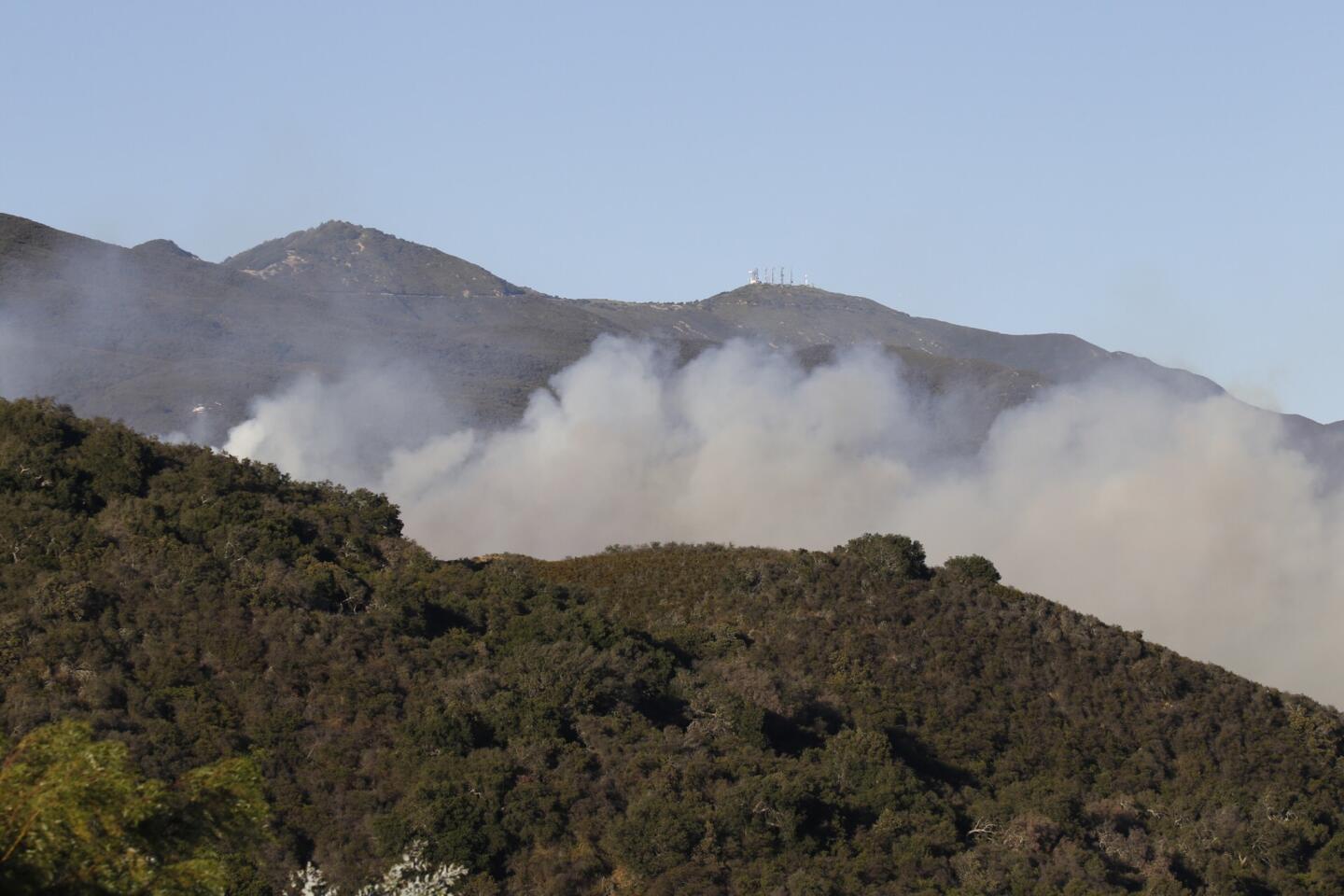Santa Barbara fire explodes with the help of dangerous ‘sundowner’ winds
The Sherpa fire in Santa Barbara County is being fueled by notorious “sundowner” winds.
The sundowners have been the cause of numerous devastating fires along Santa Barbara's mountainous east-west coastline, bringing strong Santa Ana-like winds around sunset. Sundowners caused a 1990 blaze that destroyed hundreds of homes in Santa Barbara County.
The sundowner effect can be so destructive because of the violent clash of hot air from the Santa Ynez Mountains and the cool air of the Pacific Ocean. The sundowners can produce wind gusts that top 80 mph and increase temperatures.
Sundowners are similar to the Santa Ana winds that have fueled many brush fires around Southern California. Both are formed by strong surface high pressure over the great basin, according to the Montecito Fire Department. The department, which battled a 2008 sundowner-fueled fire that destroyed dozens of homes, described the winds this way:
Sundowners are also formed by building high pressure, however, this high pressure is much weaker but much closer to the Santa Barbara South Coast. Usually when the winds are fairly strong along the Central Coast of Santa Barbara and San Luis Obispo Counties to the north, high pressure builds near Santa Maria behind the Santa Ynez range. As this high pressure builds, the same rule comes in play ... air flows from high to low pressure. Air pushes through the passes and canyons of the Santa Ynez Range, especially through the Gaviota Pass, San Marcos Pass, Montecito foothills, and some smaller canyons. The wind that results is more of a northwest to northeast wind and is usually quite strong.
MORE ON SHERPA FIRE
Santa Barbara fire bad omen for dangerous California fire season
Watch as the Santa Barbara fire jumps Highway 101 and firefighters seek shelter
Fire burning in Santa Barbara County more than doubles to 4,000 acres overnight
Sign up for Essential California
The most important California stories and recommendations in your inbox every morning.
You may occasionally receive promotional content from the Los Angeles Times.
